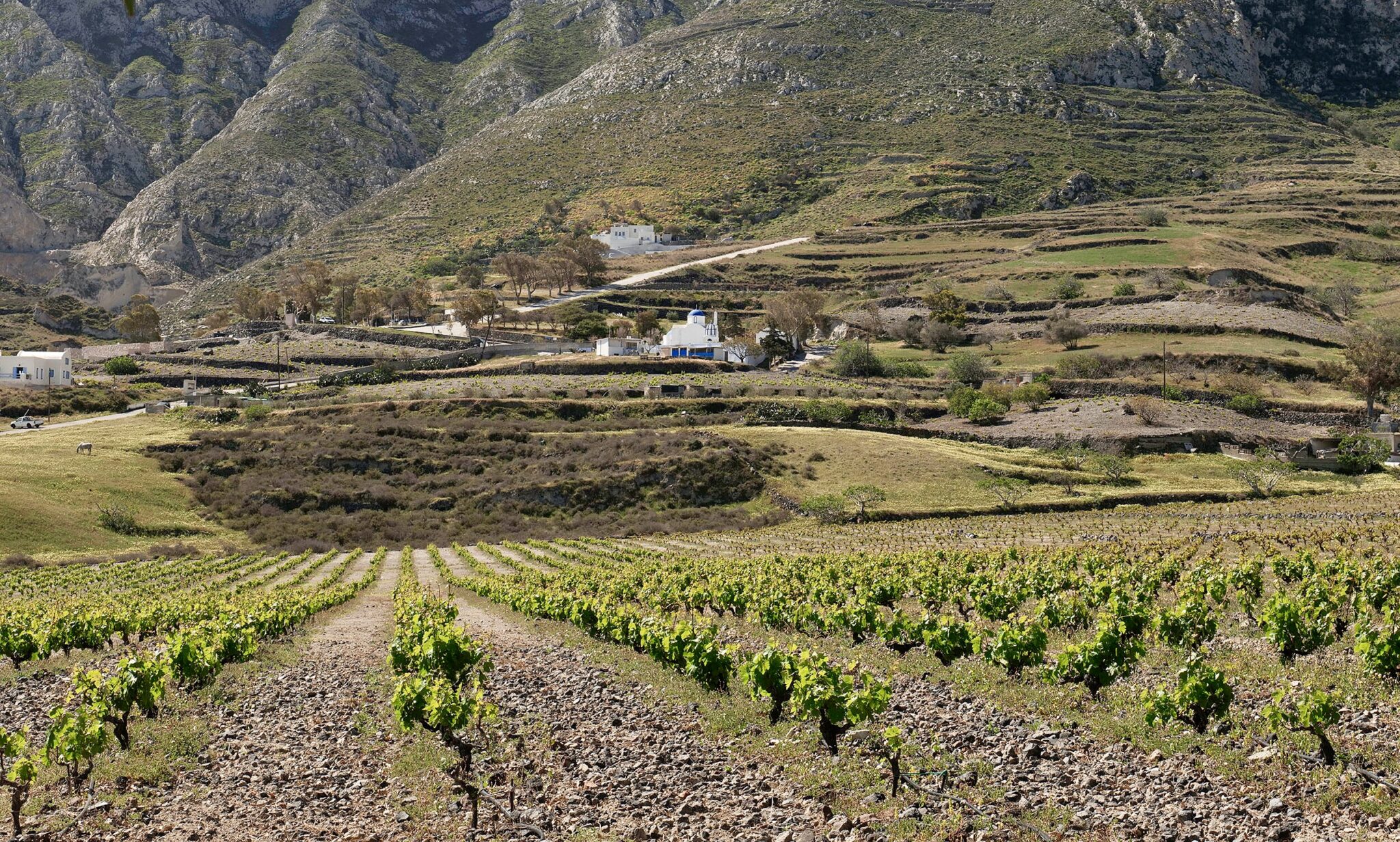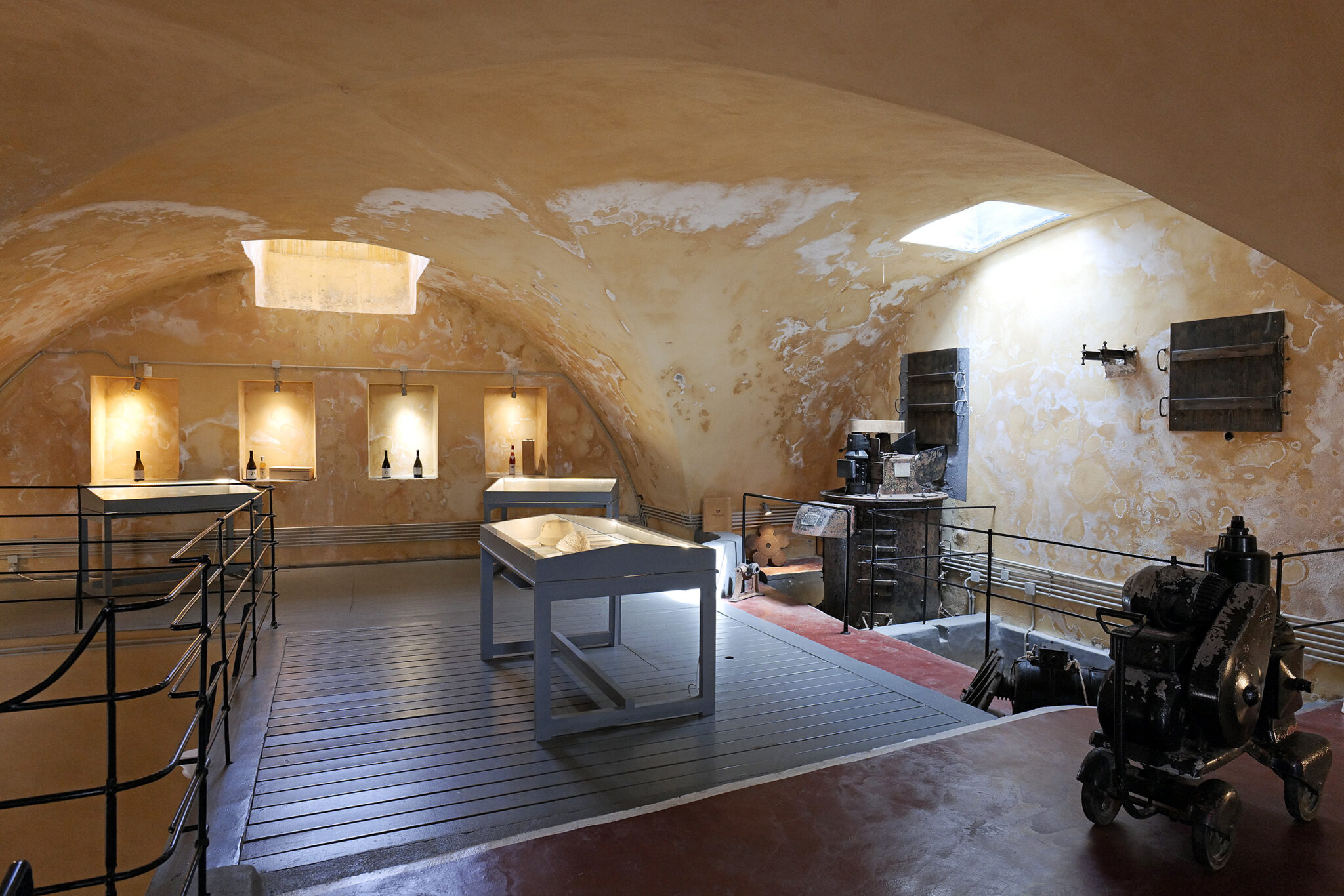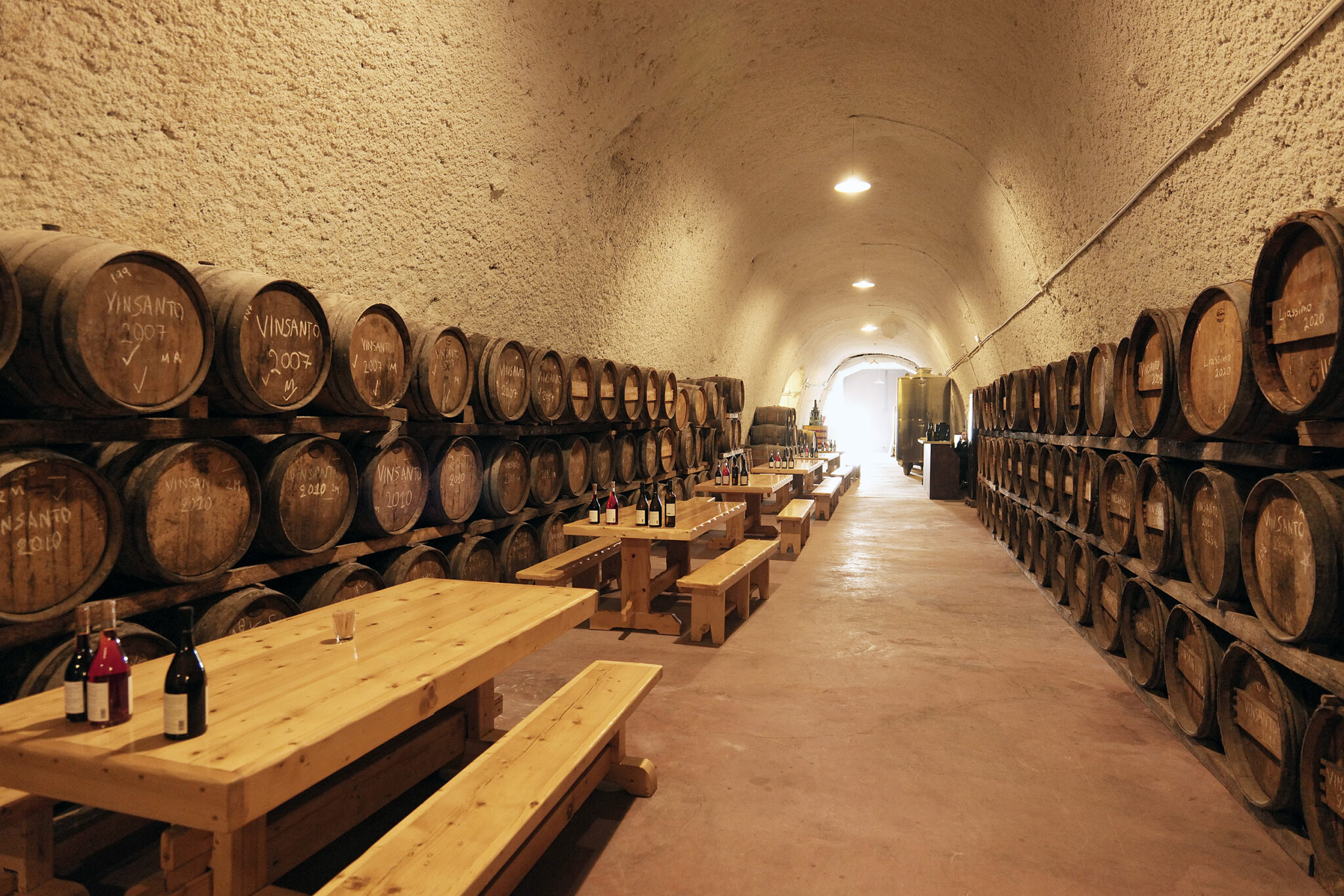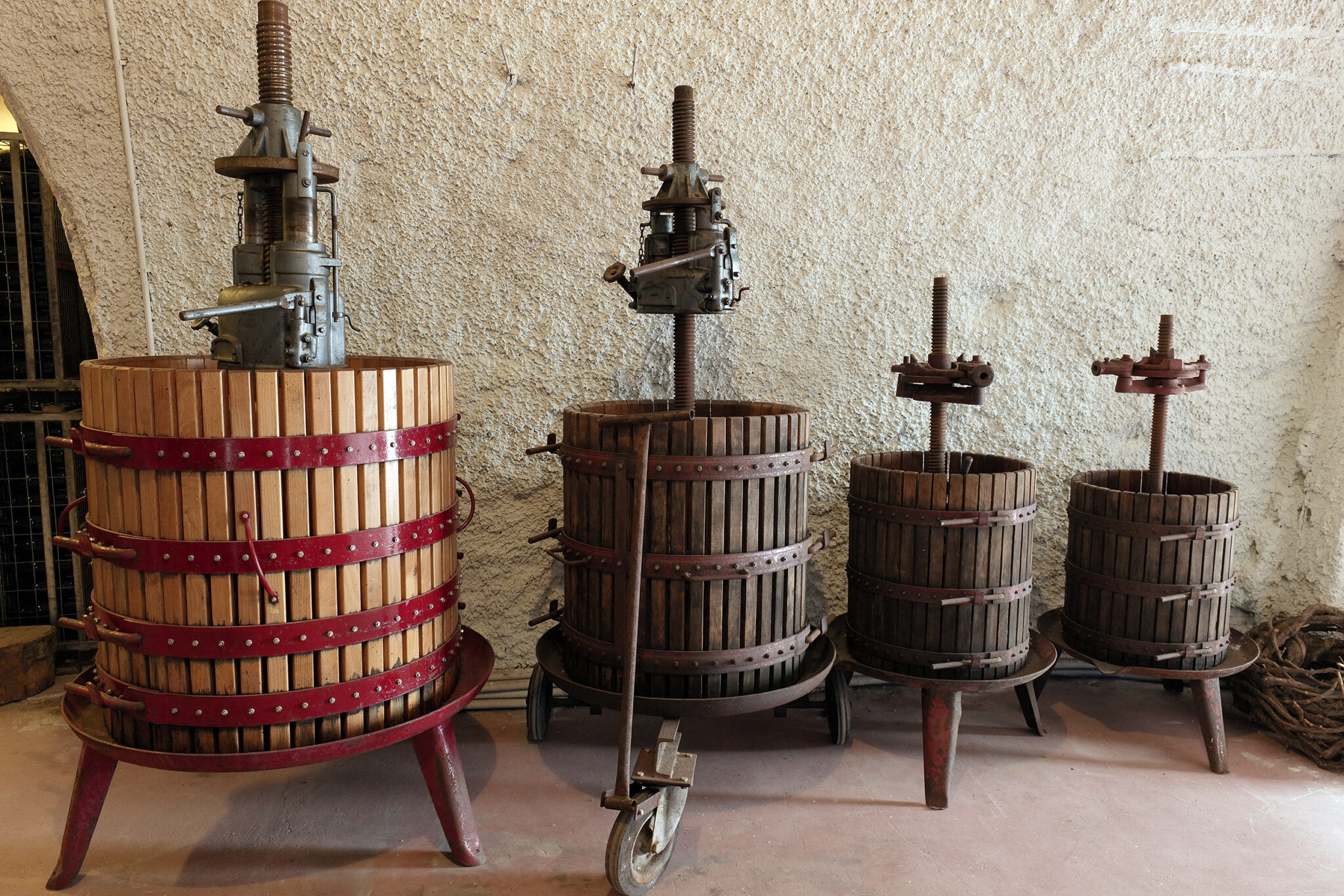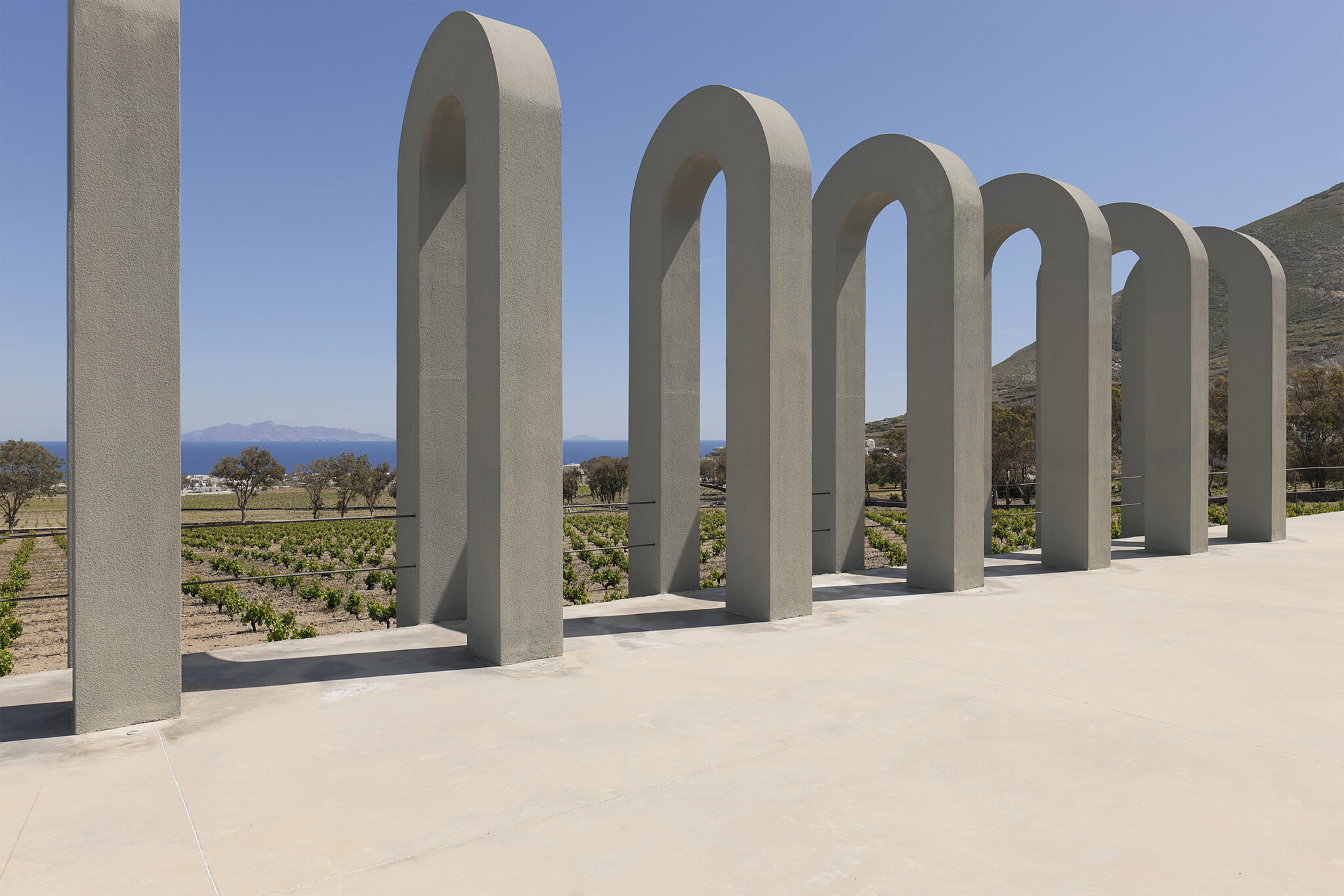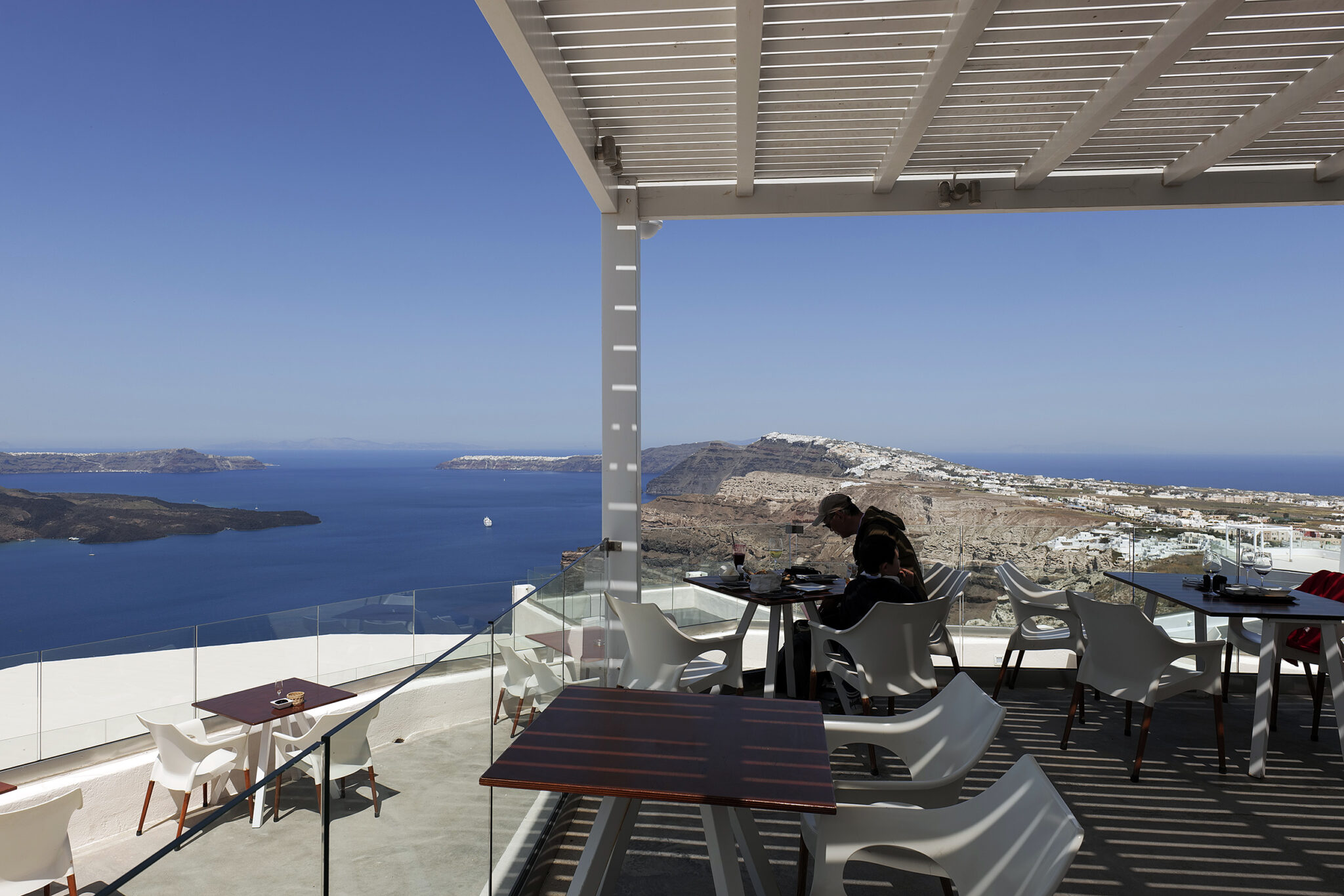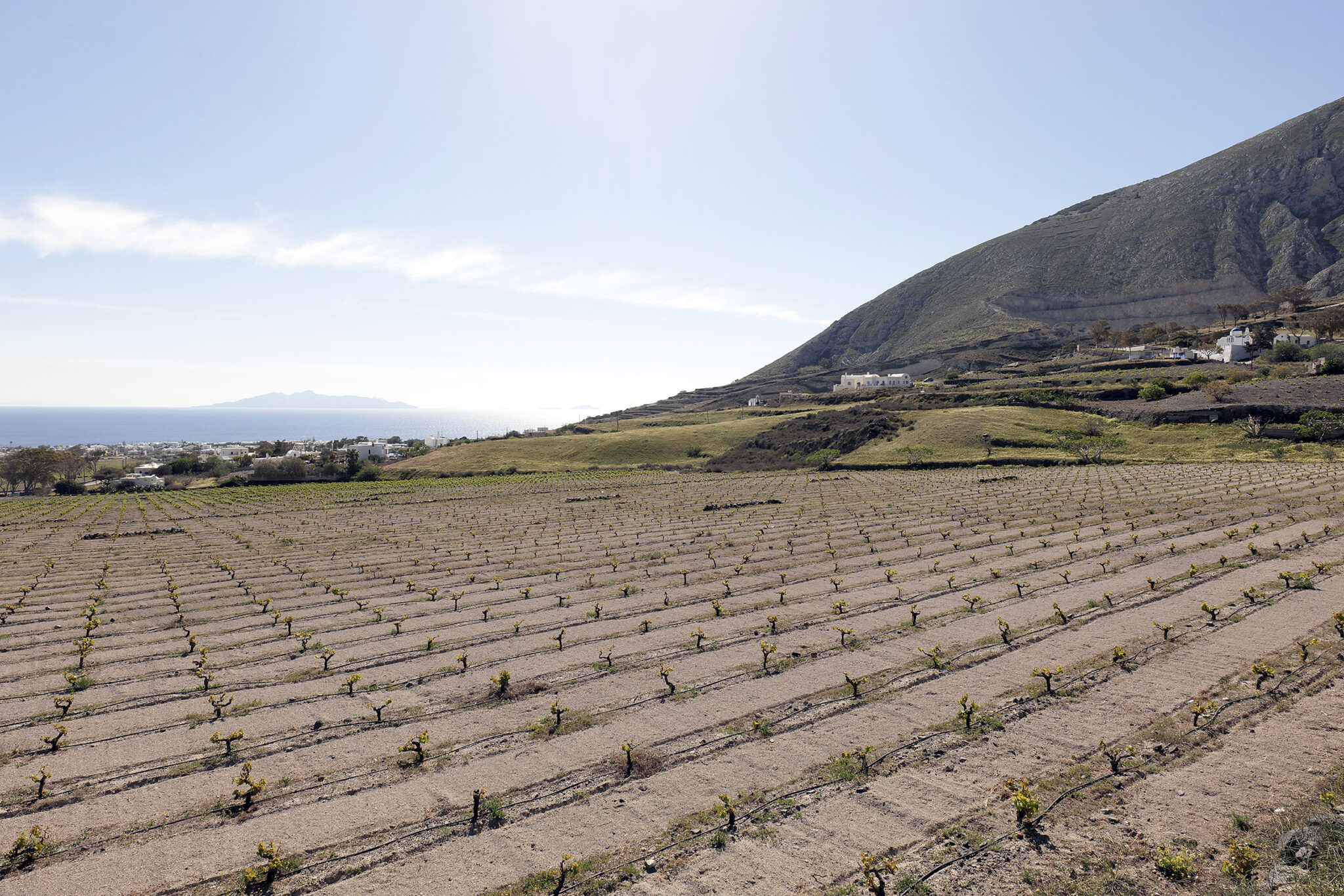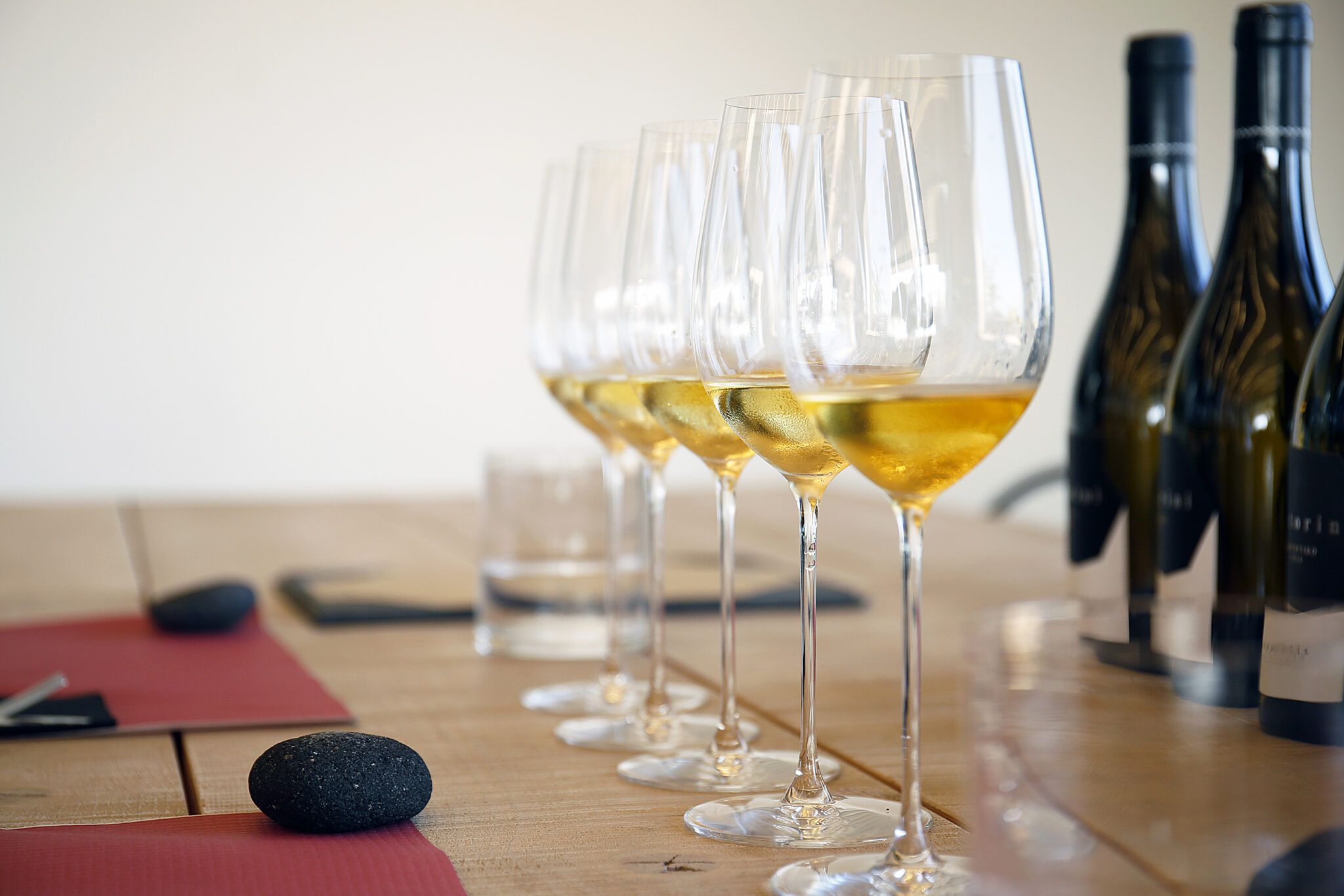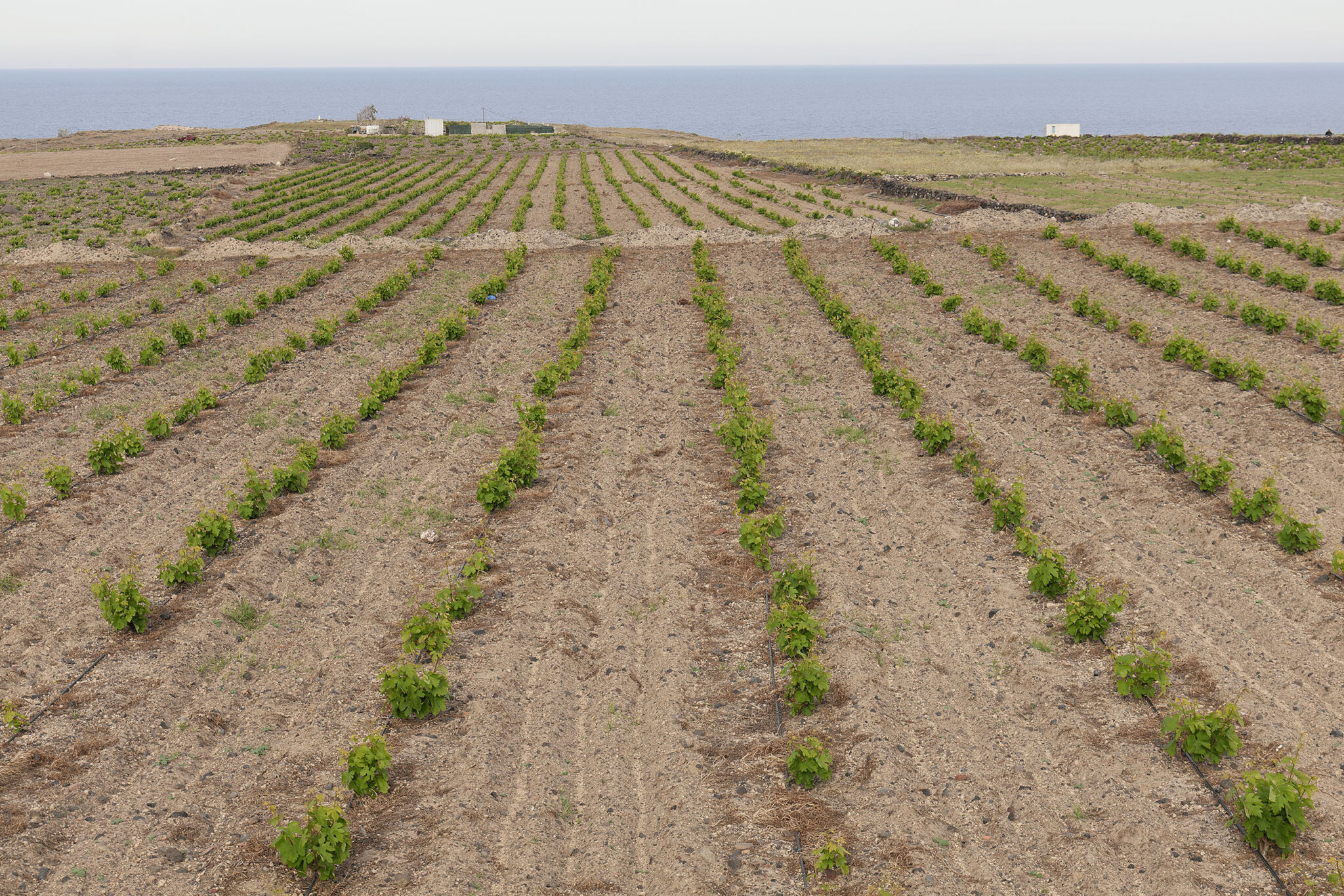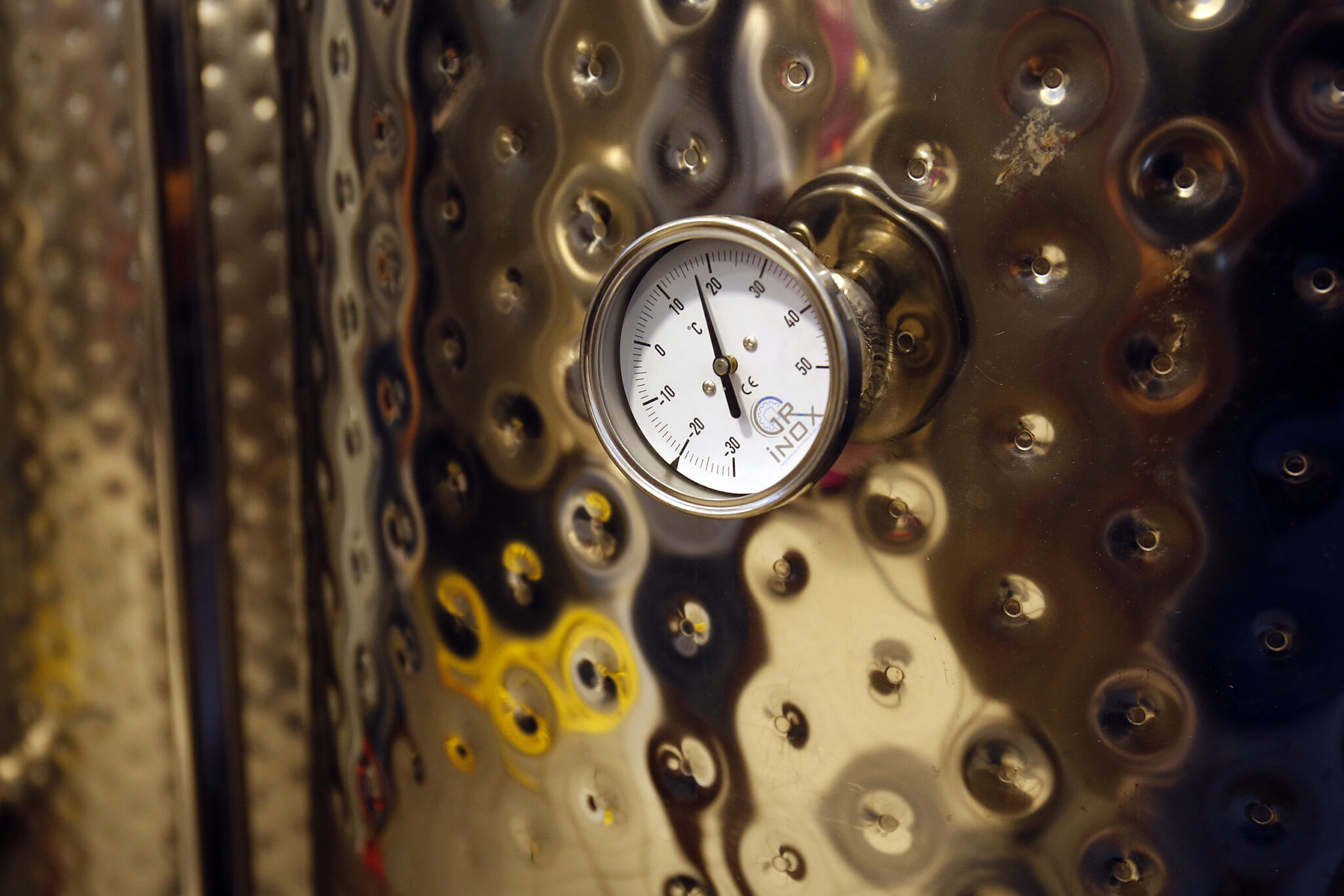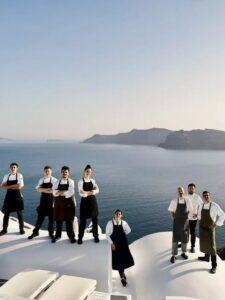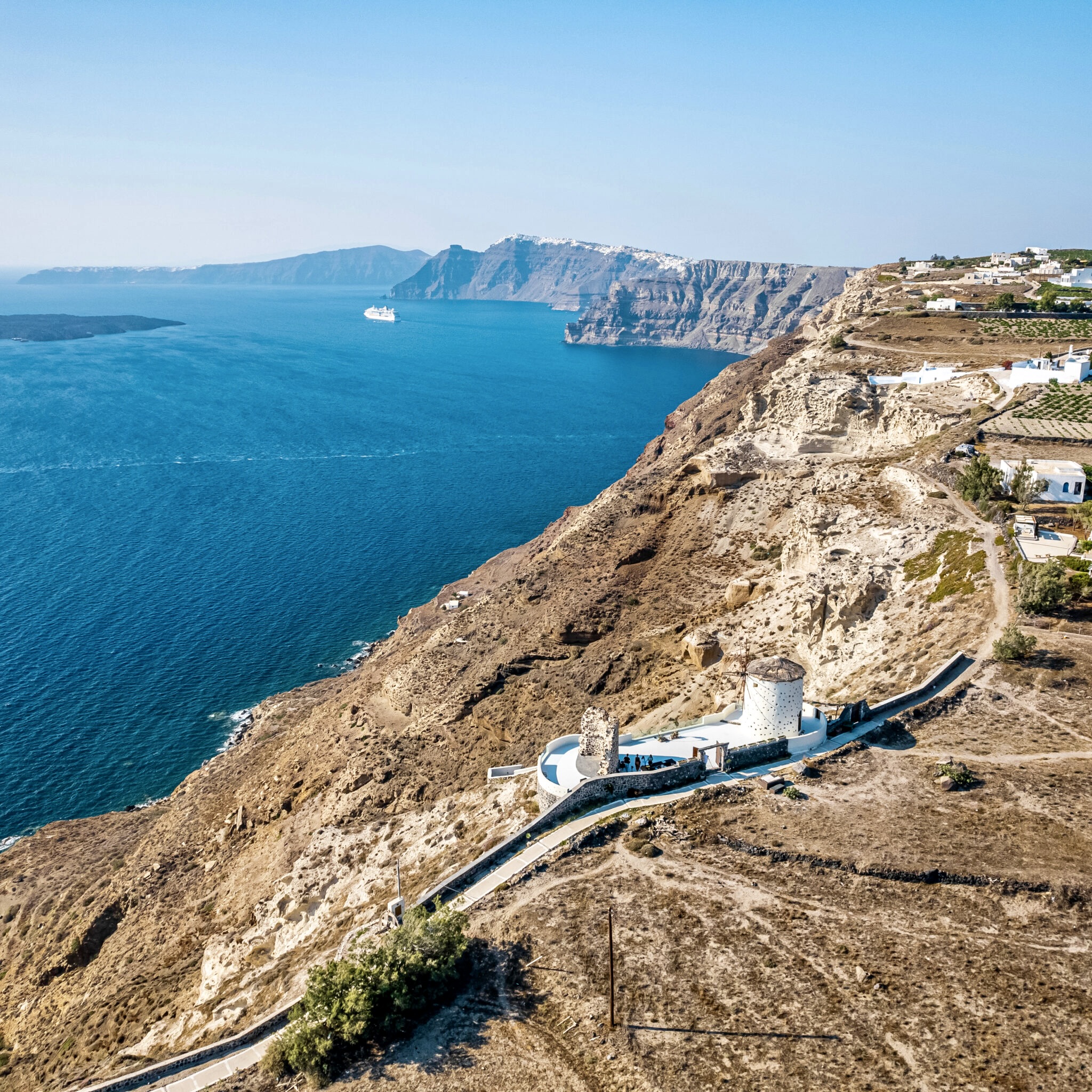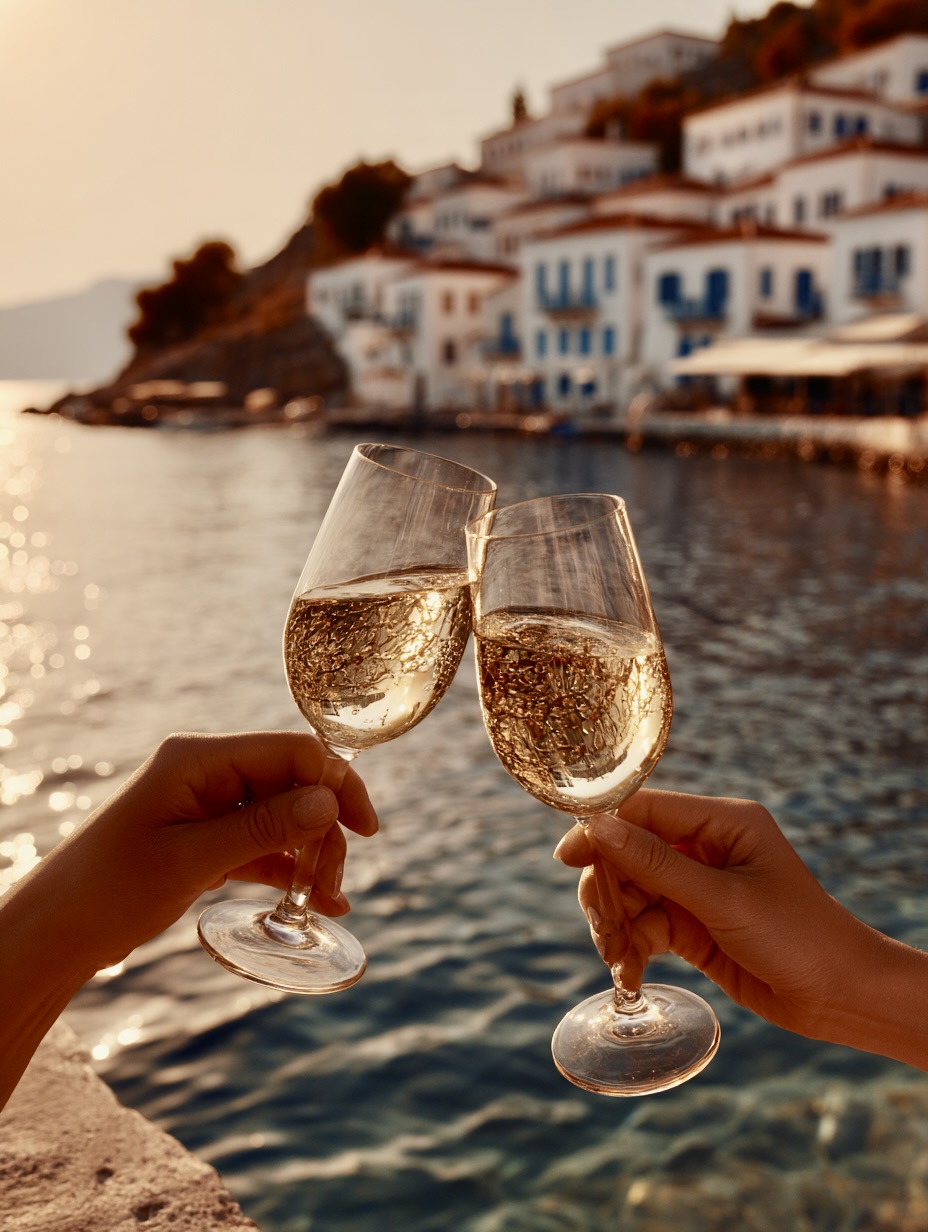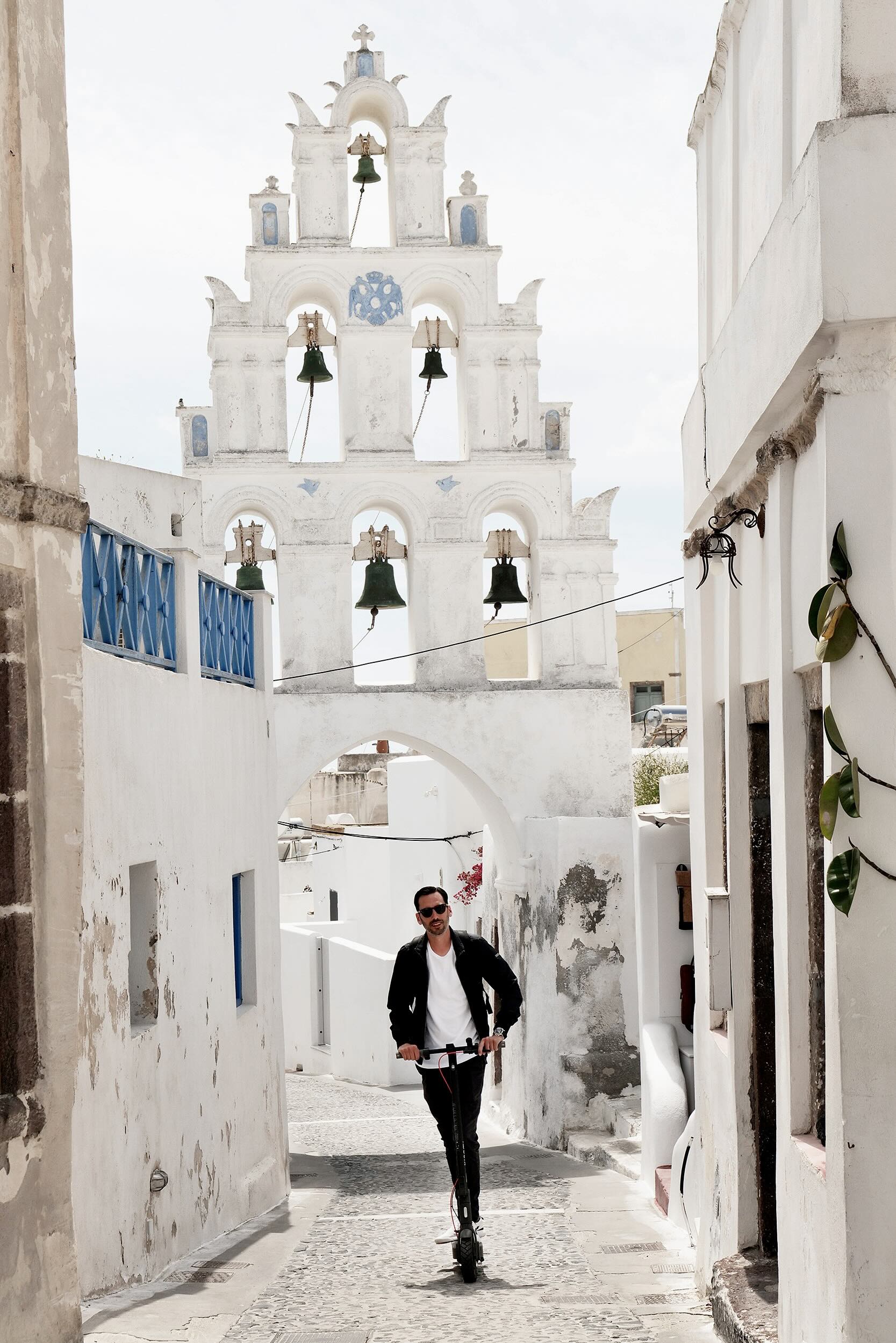Santorini is less an island than a tectonic fever dream: wild, seismic, forever on the verge of reinvention. The place vibrates: pumice cliffs glowing pink at dawn, obsidian beaches inhaling the Aegean, villages poured across the rim in white-washed filigree. Black vans glide from Fira to Oia, their windows dark as ink; jets trace lazy ellipses overhead. Everything feels in motion, as though the land itself is still trying to remember the moment it exploded into being.
Out of this scorched amphitheater comes one of the planet’s great paradoxes: Assyrtiko, a wine as racy and salt-etched as sea spray. Its vines, coiled into tight, low baskets called kouloura to dodge the furnace winds, seem like artifacts from another century. Phylloxera never breached this volcanic fortress, so the roots run ancient and ungrafted, gulping minerals that read as electricity in the glass.
Volumes of scholarship and vanity have been devoted to the grape, yet the surest way to understand it is as ancient sailors once navigated these waters: by instinct. Forget itineraries. Choose a winery, any winery, step into the blinding light, and taste the island straight from the stone.
Venetsanos Winery
Built in 1947 above the caldera near Megalochori, Venetsanos is one of Santorini’s most breathtaking wineries. The site stirs awe on arrival. Led by Petros Vamvakousis – winery manager and a passionate guide to Santorini’s oenological landscape – the tour follows the building’s design: from top to bottom.
The island’s first industrial winery begins on the highest floor, where traditional vaulted ceilings known as stavrotholaria are immediately visible. This technique, used in Cycladic bridge construction, was masterfully applied by builder Tzortzis Saliveros, also known as Batzanis, who’s behind several architectural gems across the island.
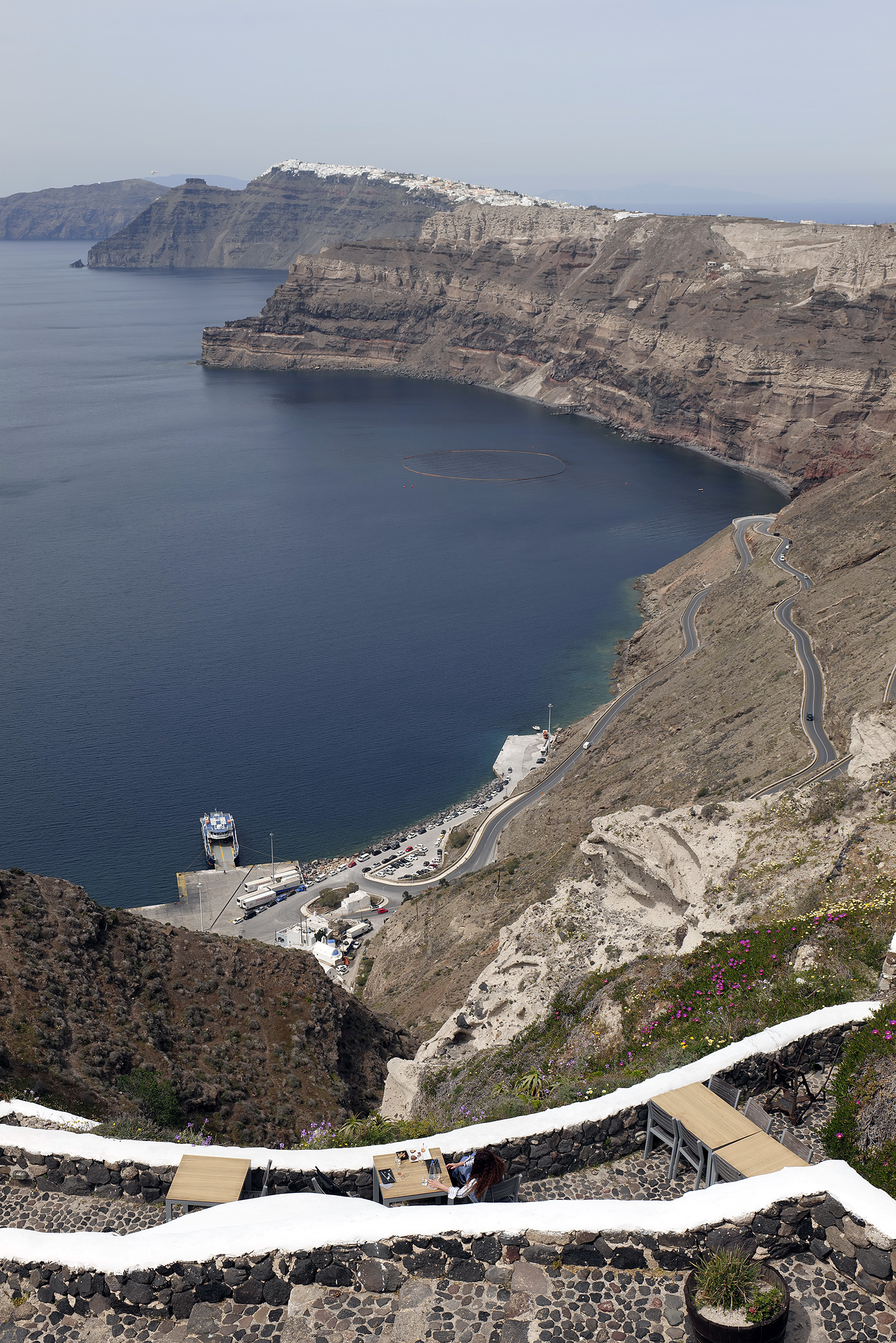
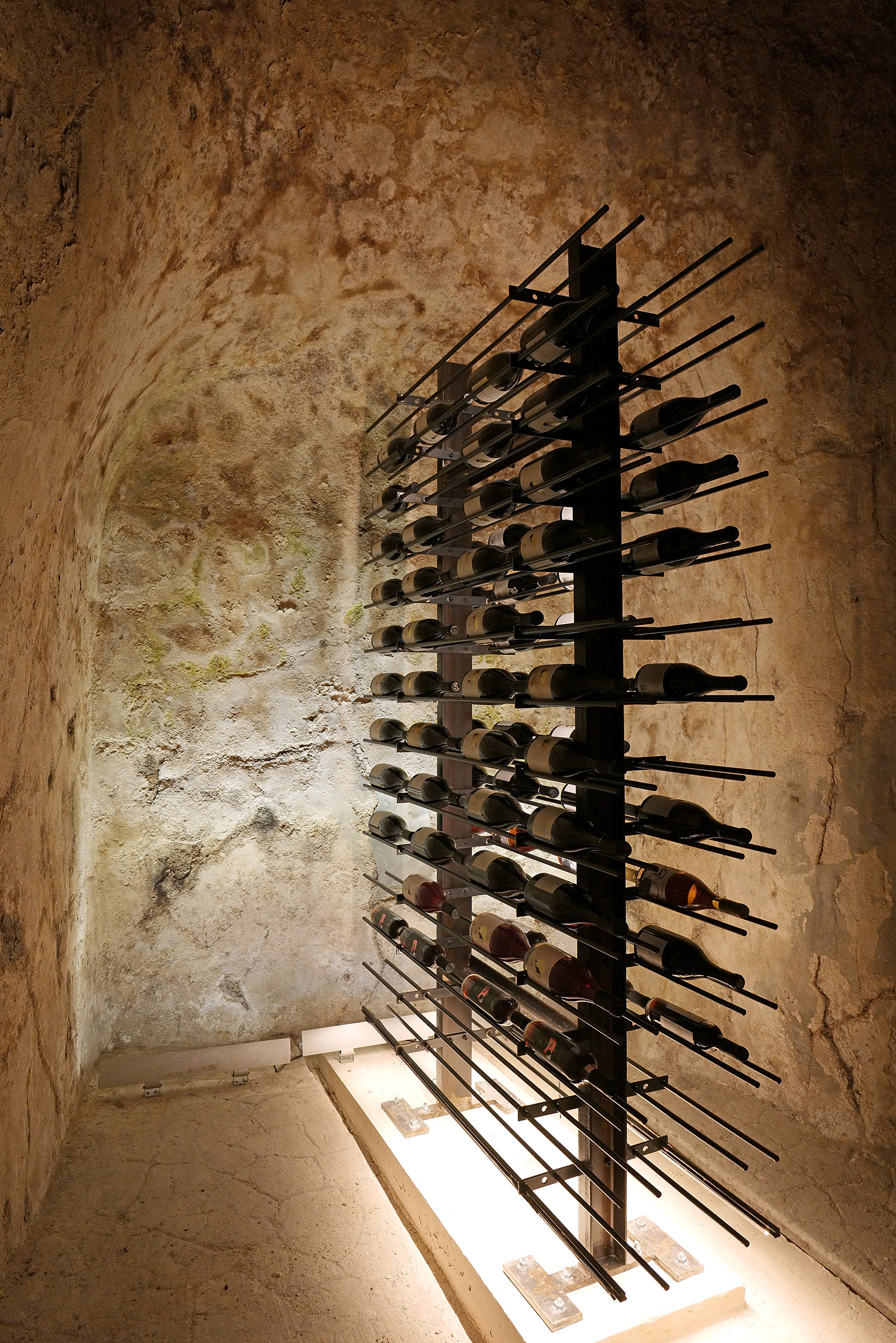
The museum area elegantly presents the Venetsanos family history—from early years in Egypt to their first labels and the chromatic choices in the tasting rooms. Inside, the space is cool and sunlit, where light filters through carefully designed openings. Blended into the caldera’s contours, the winery forms a gentle, functional labyrinth. Egg-shaped tanks carved into volcanic ash once held 100 tons of wine. Their shape—now common in modern winemaking – was ahead of its time. Back then, they lacked manholes, so workers had to climb in and out from the top, adding an oddly intimate dimension to the labor.
Descending an Escher-like staircase through hand-dug corridors, we reach the tank bases. Strategically perched above Athinios port, the winery was designed to let wine flow by gravity directly to docked ships. The stable, pleasant interior temperature? A legacy of the island’s late electrification – Kamari, for instance, didn’t receive power until the late 1970s.
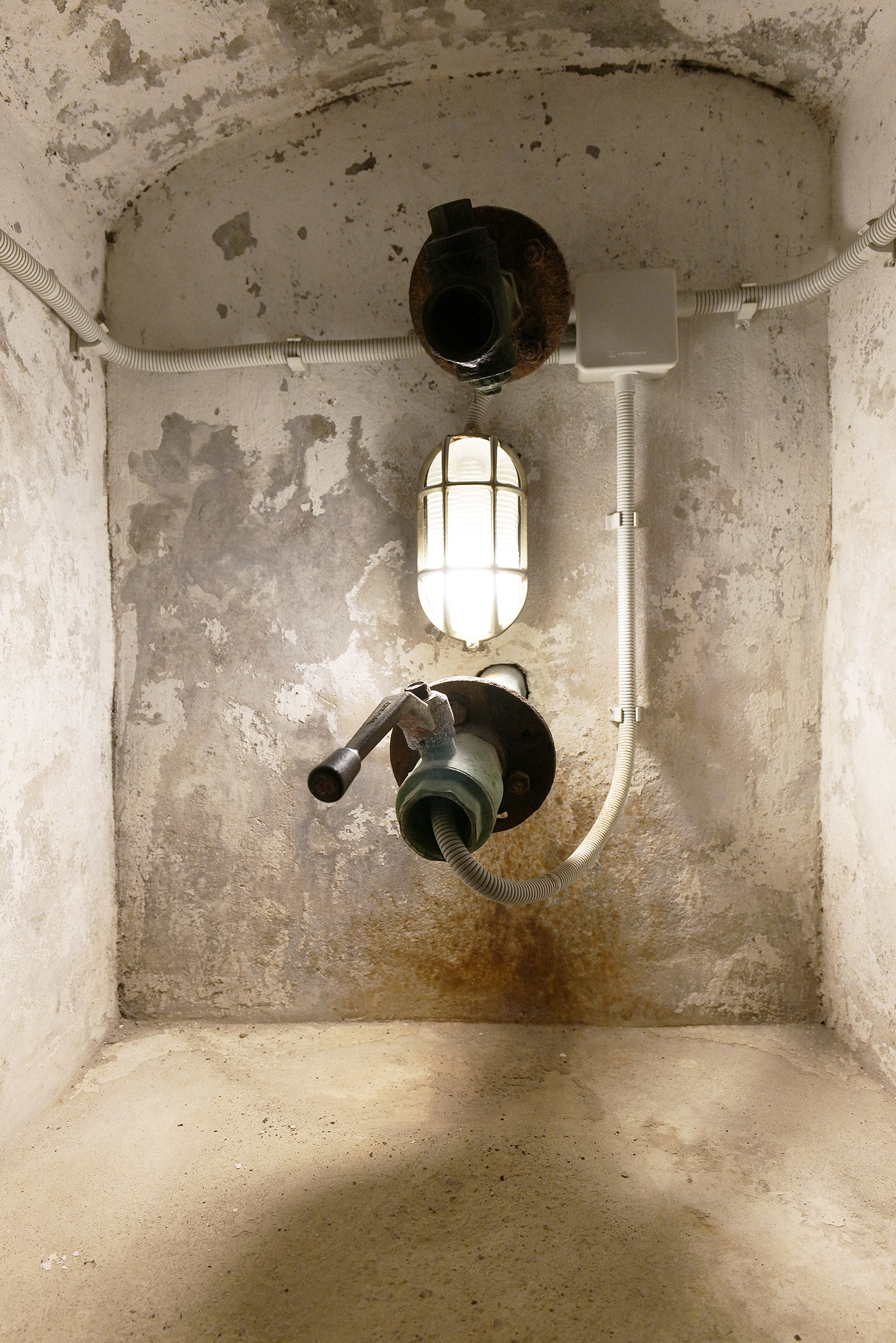
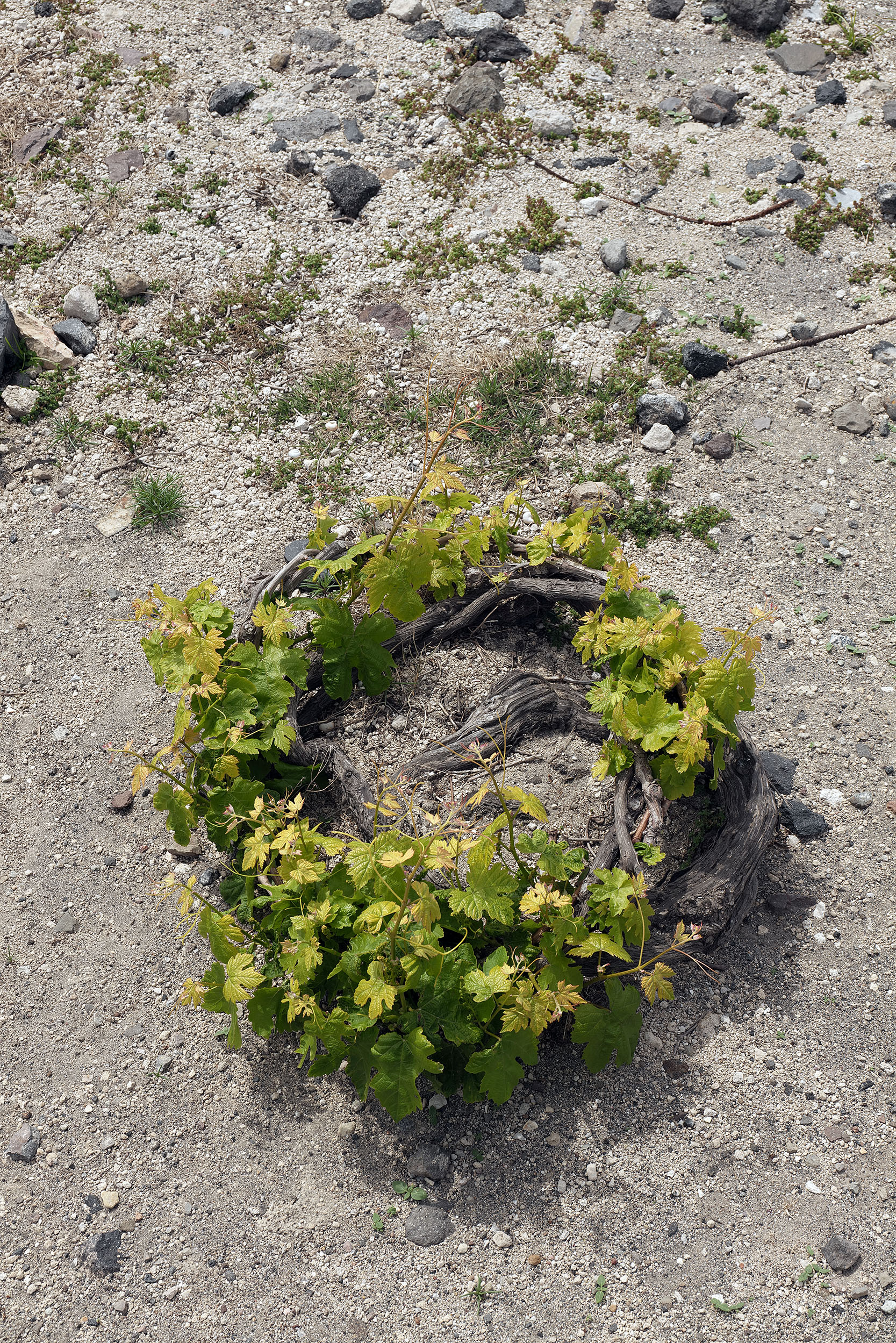
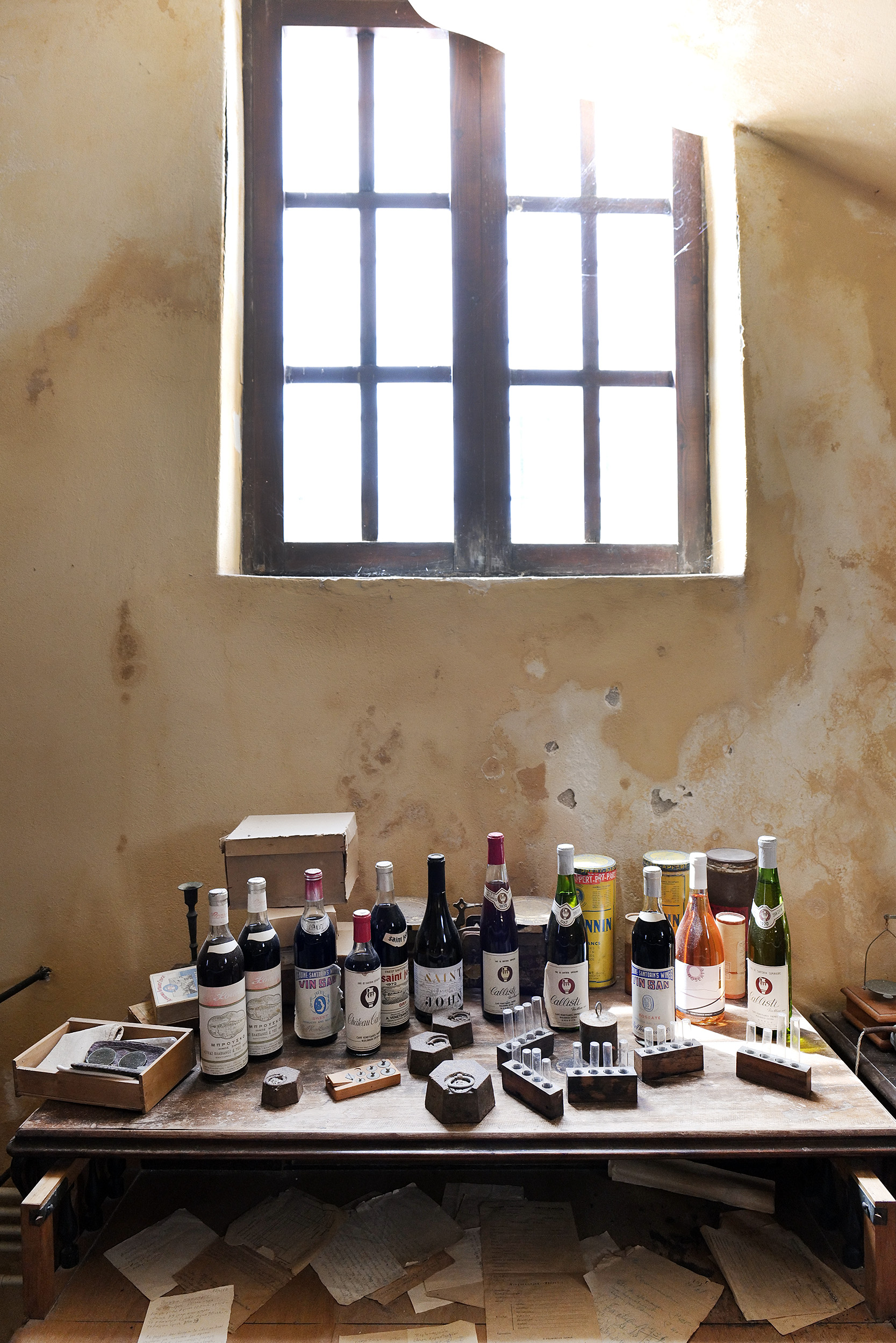
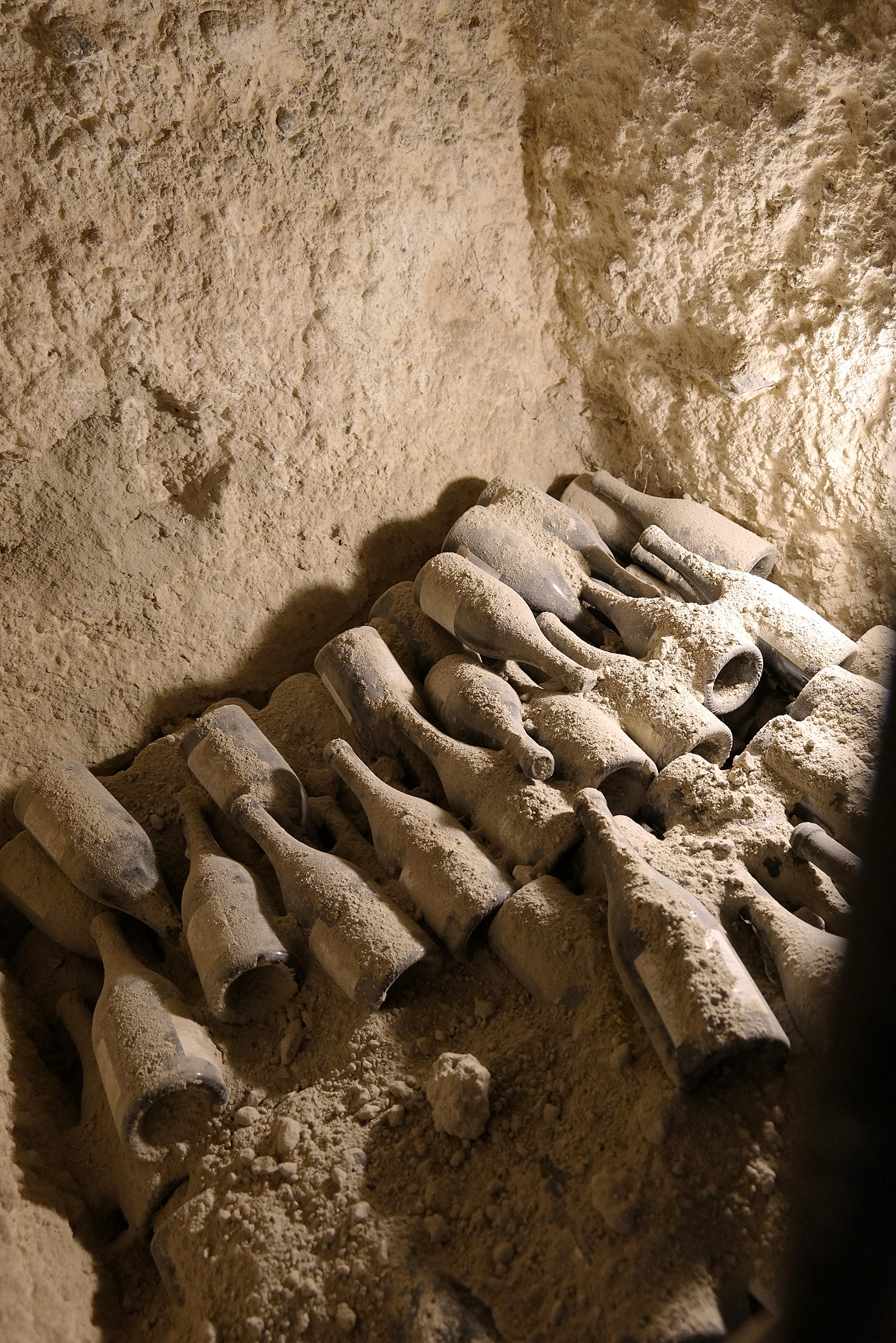
Emerging into the fierce Cycladic sunlight for a tasting, our conversation shifts to the present and future. Santorini’s wine scene faces challenges: water shortages due to climate change, diminishing humidity from the volcano, rising land development, and fewer young growers. Despite this, Santorini wine remains one of the island’s strongest trademarks. The tasting ends with a stunning Nyktéri and Vinsanto, their richness lingering on the tongue and in the mind.
Hatzidakis Winery
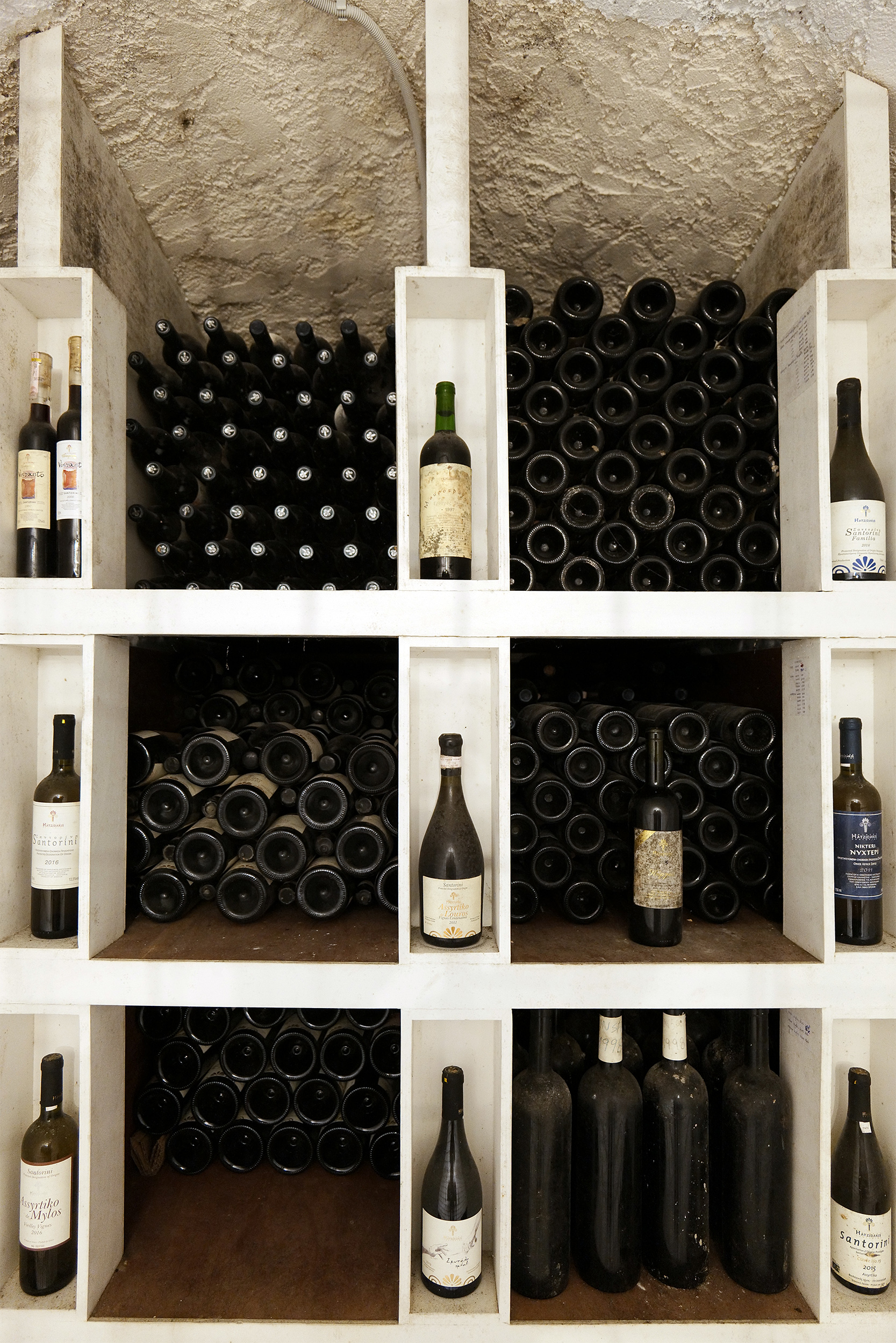
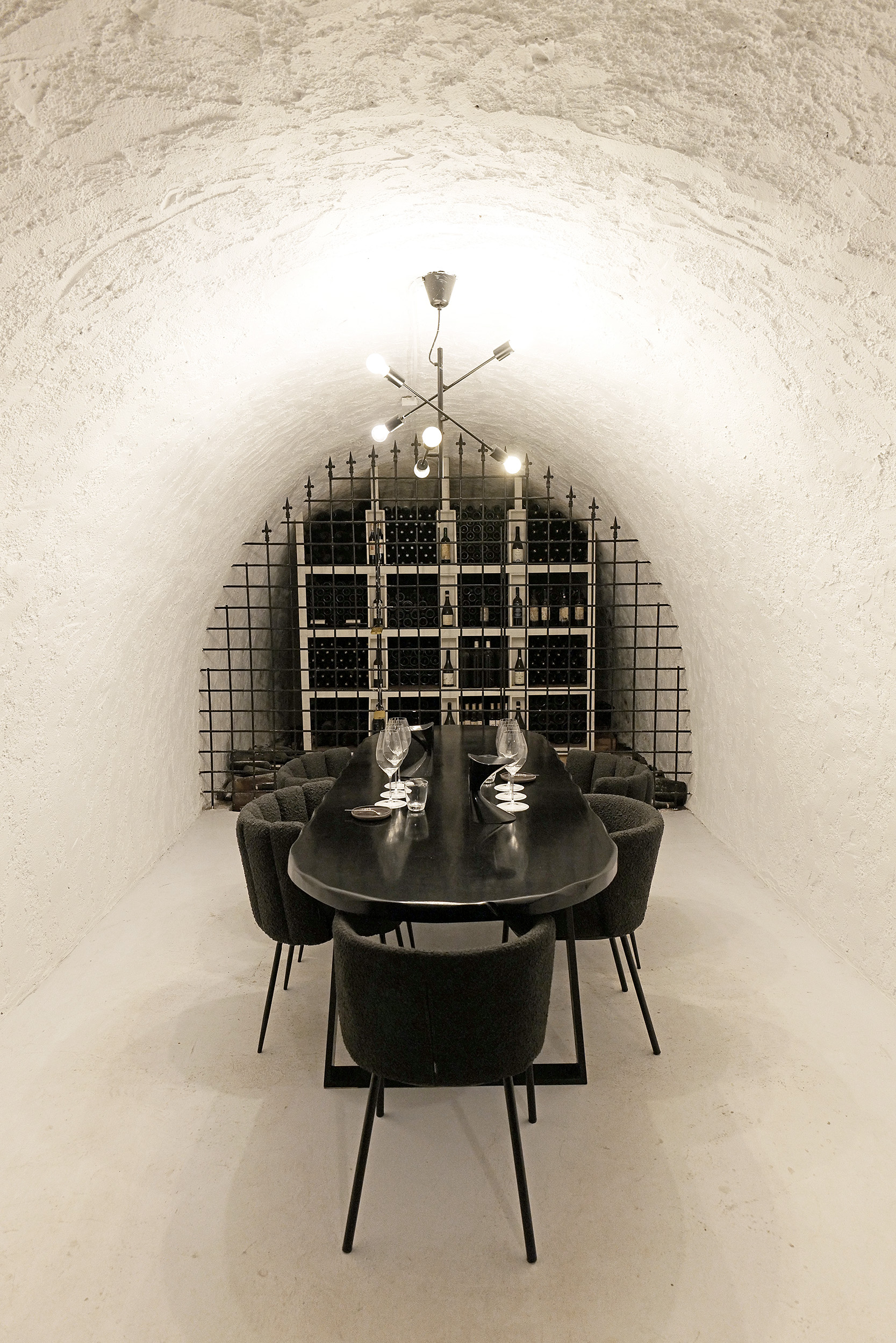
Driving toward the organic Hatzidakis Winery in Pyrgos Kallistis, I can’t shake the thought that grape yields on the island have dropped by nearly 75% in recent years. But optimism returns the moment we arrive. At 330 meters elevation, Haridimos Hatzidakis and Konstantina Chrysou expanded a natural cave to 15 meters depth, creating a kanavaki, a small family-style winery carved below their land to avoid disturbing a single vine.
Inside, the temperature remains steady at 14°C with 75% humidity. The production line is mostly manual, and grapes are sorted by hand with quiet reverence. Wines are fermented with wild yeasts, no additives – earning vegan and organic certifications. Used barrels are favored to avoid dominant wood aromas. Our guide, food technologist Maria Galaiou, explains the process in a tone that feels almost devotional.
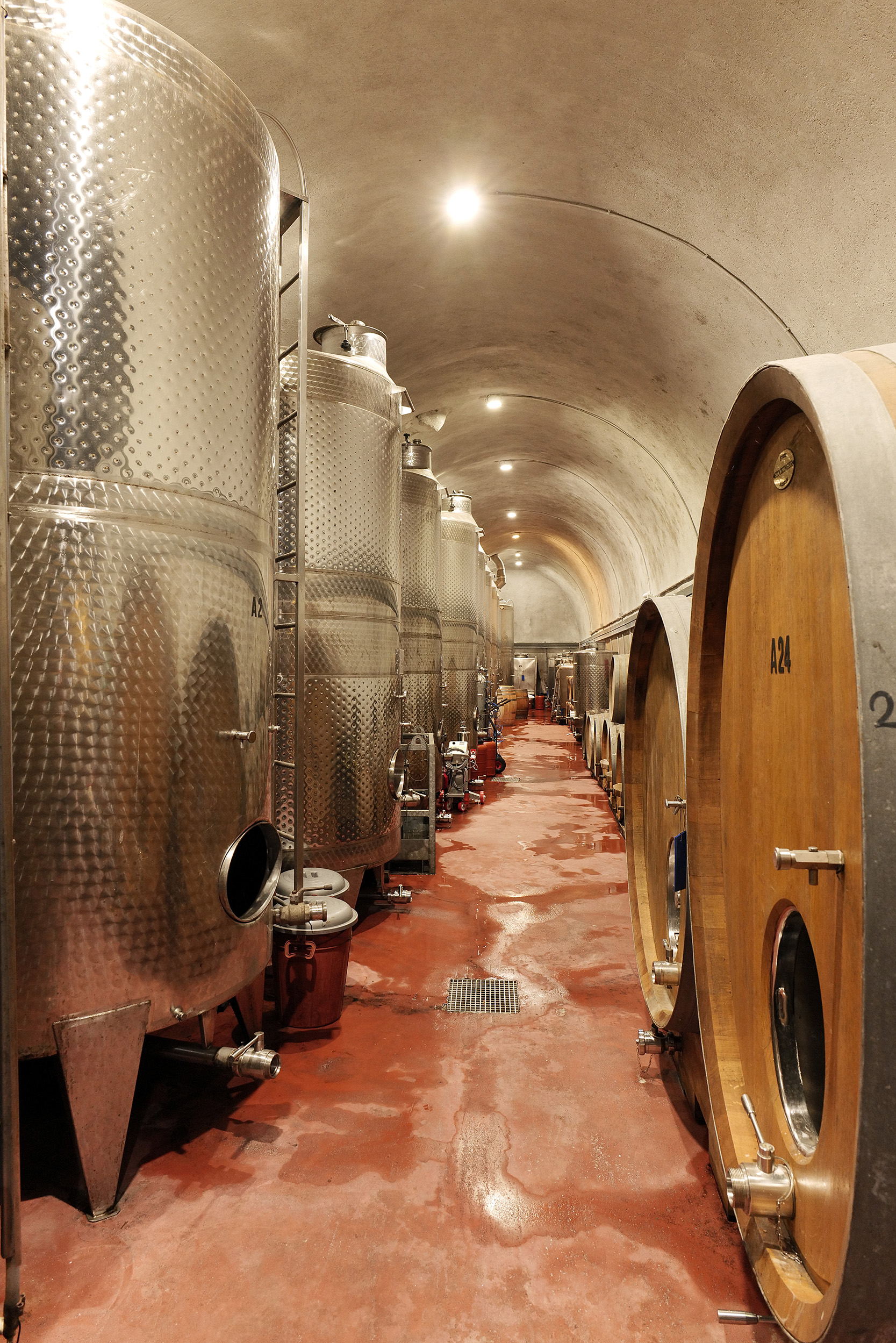
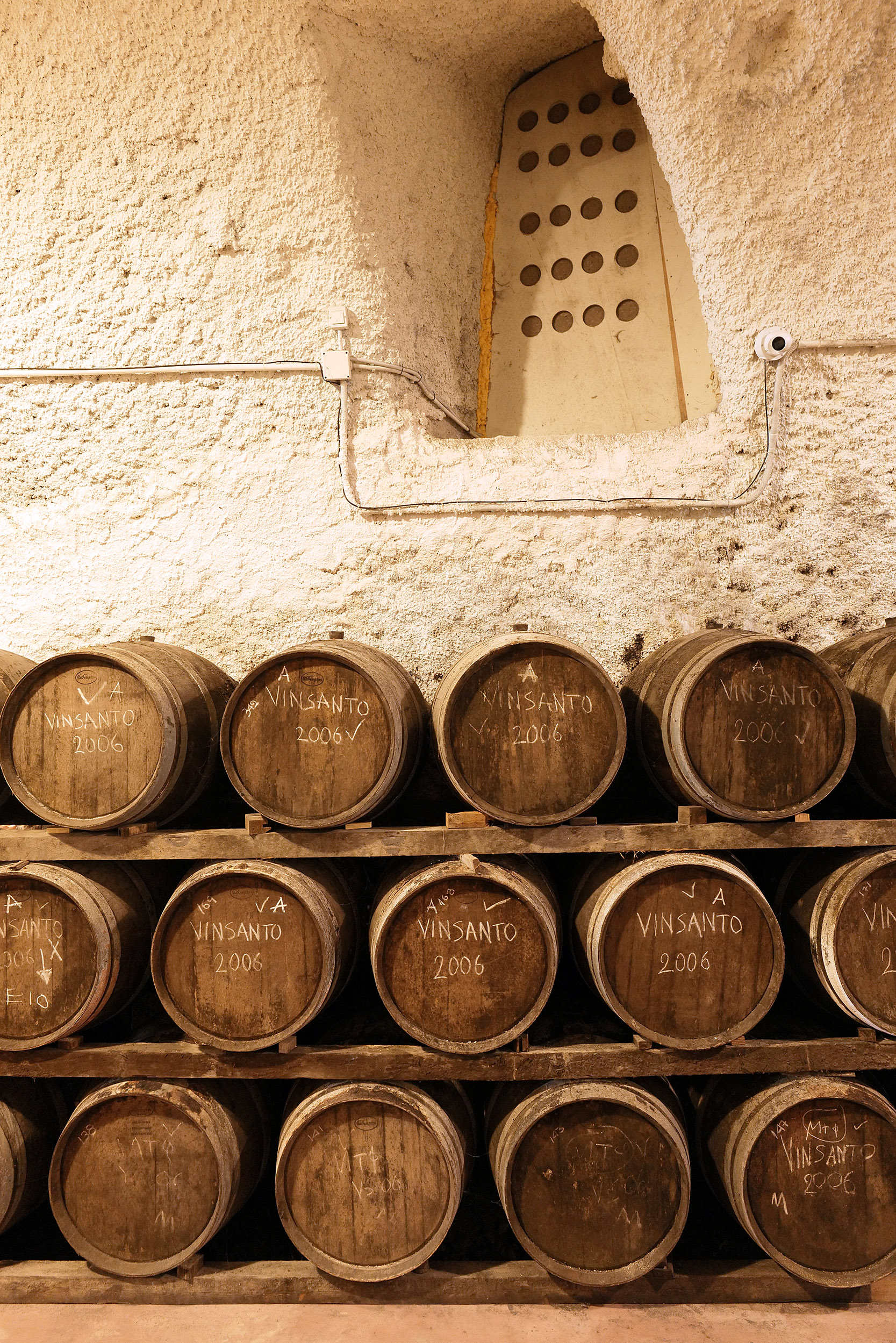
Walking past rows of Vinsanto casks and monastic wooden tables, there’s a sense of invisible order, a near-sacred atmosphere. The estate cultivates about 100 stremmata in Pyrgos, Megalochori, and Emporio, producing 60,000–70,000 bottles a year – 40% of which are exported. Despite the quality, yields are down by half in recent years.
The winery’s intimate tasting table sits beside a locked display showcasing the story of Hatzidakis, which began in 1997. Every decision here, every vine, carries intention – and love.
Estate Argyros
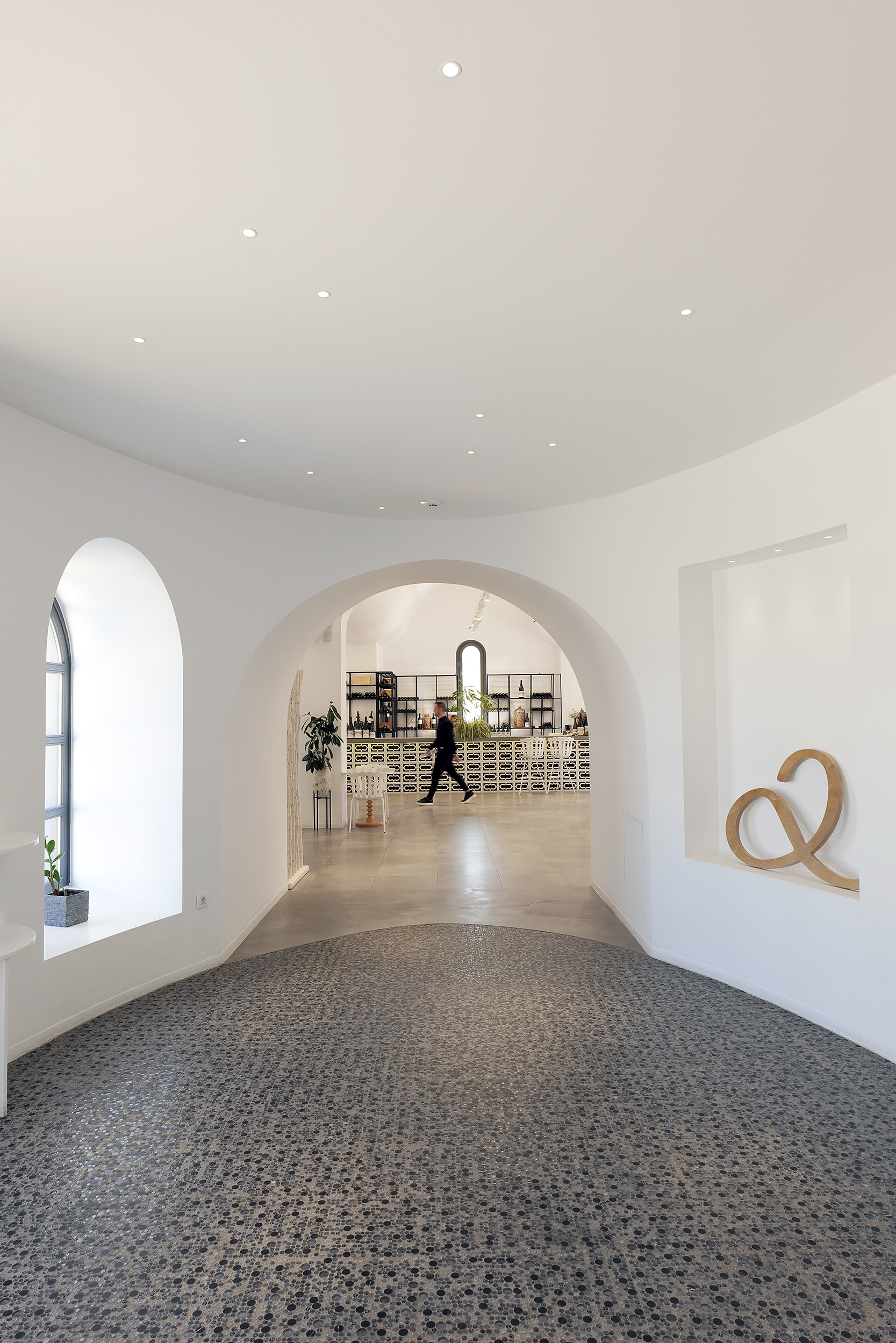
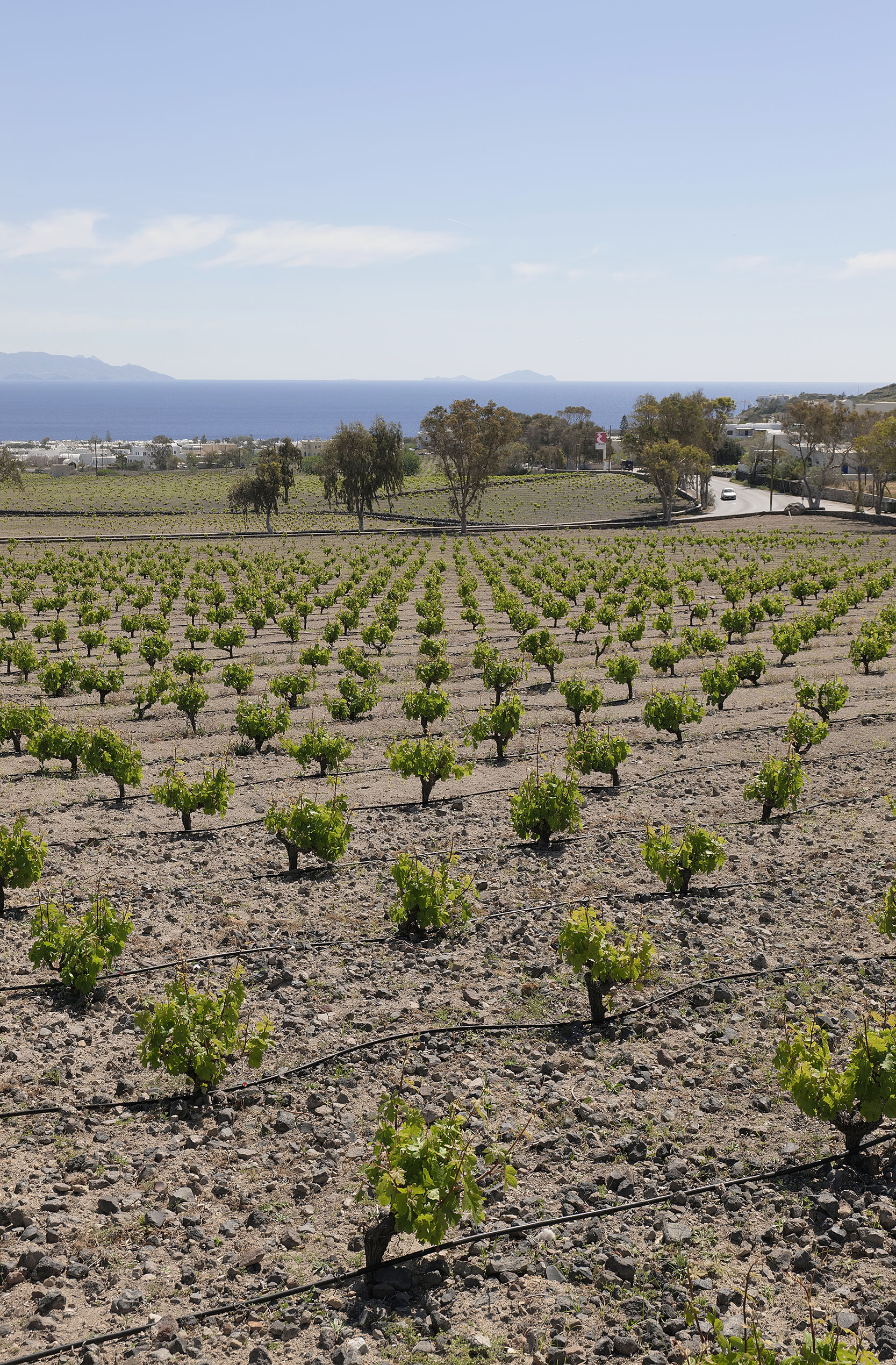
The visit to Estate Argyros in Episkopi is a masterclass in elegance. From the geometric rows of low-trained vines to the minimalist tasting room bathed in natural light, this is Santorini’s viticulture on full display. The Argyros family has been in wine for over 200 years, officially founding the estate in 1903. Today, Matthaios Argyros – fourth generation – oversees 132 vineyard plots across 1,300 stremmata.
Dimitris Motsos, the estate’s director, welcomes us warmly. He explains the kouloura system with clarity: vines are trained into tight baskets to protect the fruit from scorching sun and brutal winds, while also trapping humidity. It’s iconic of Santorini but not exclusive, and while beautiful, it’s low-yielding – making the labor more precious.
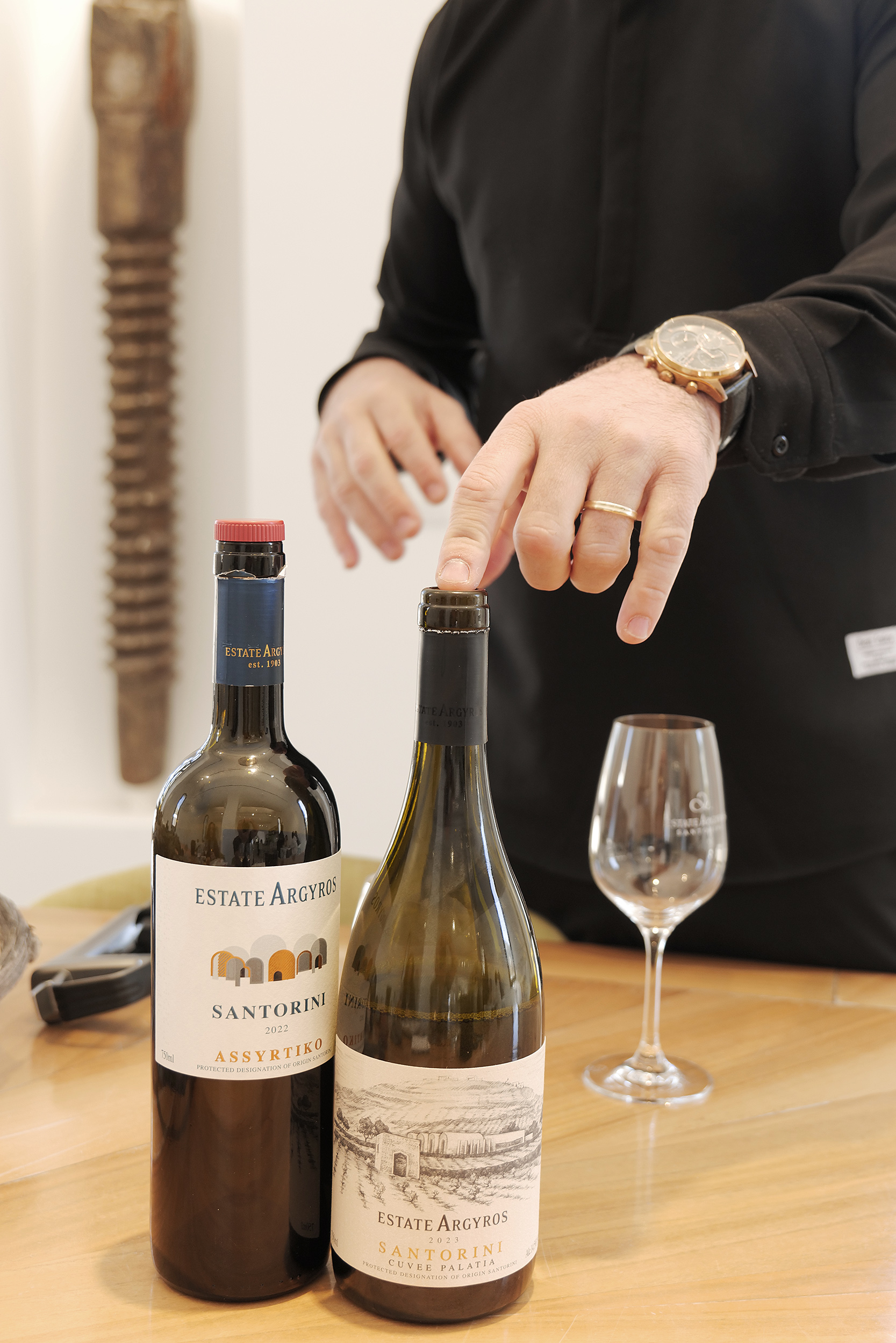
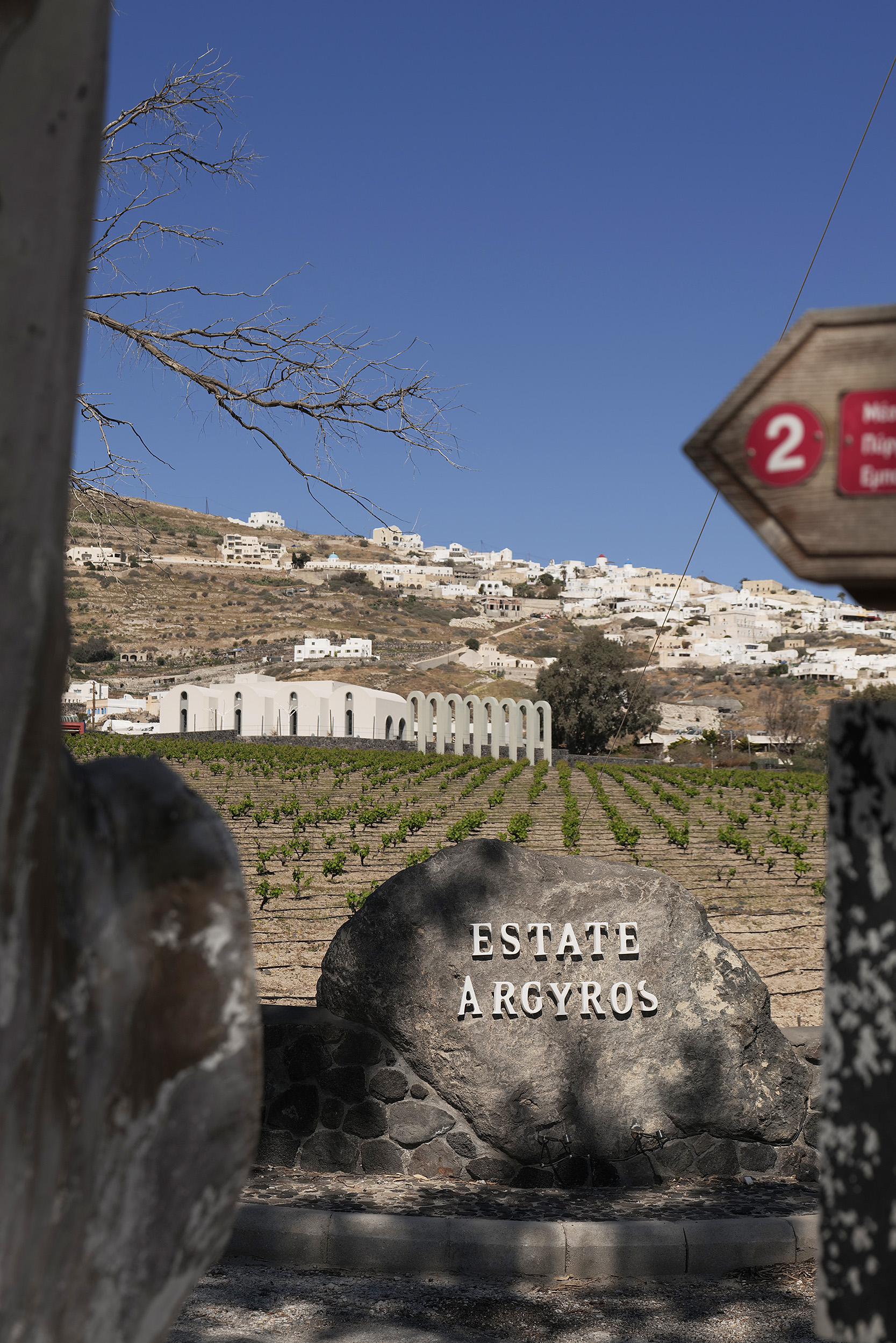
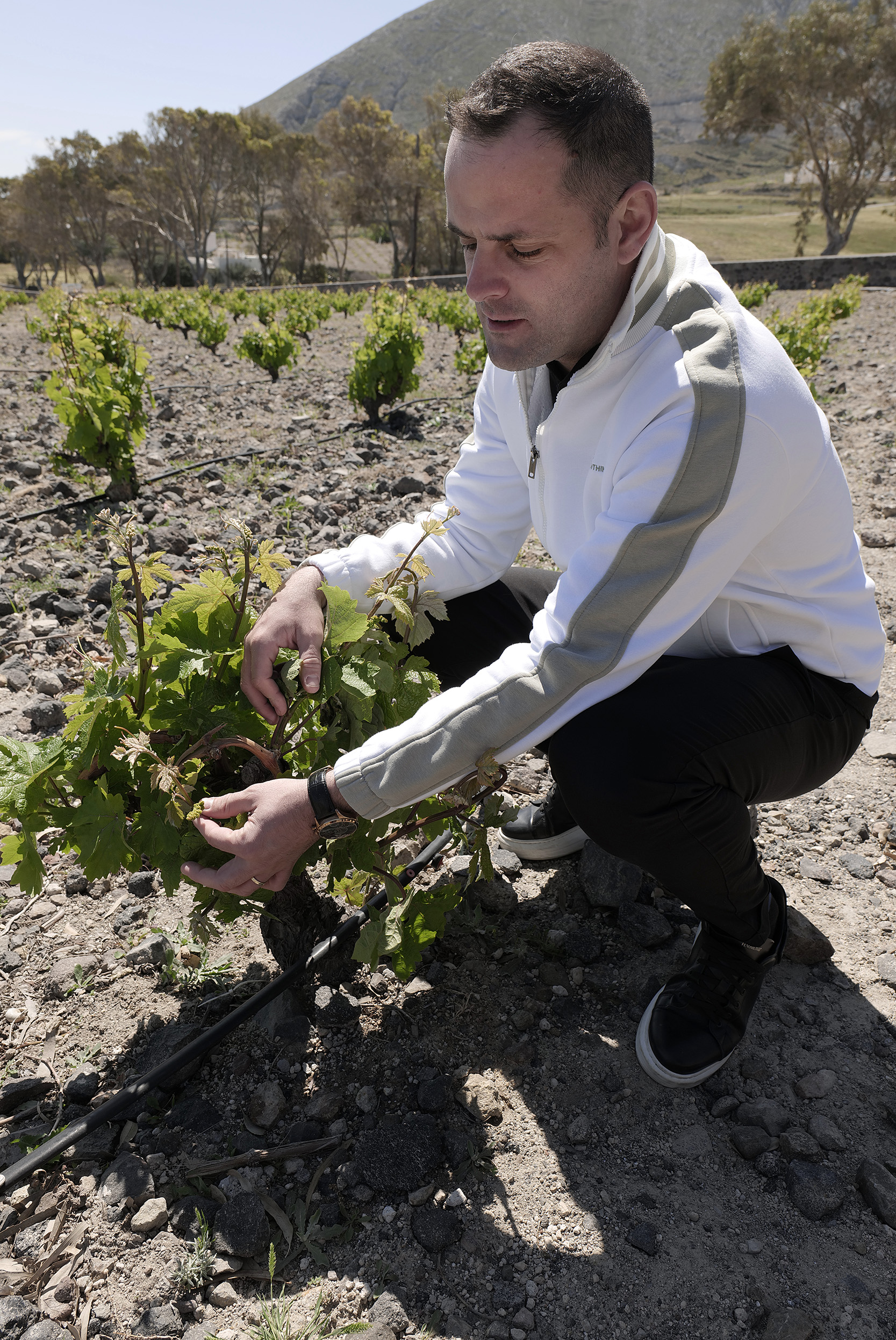
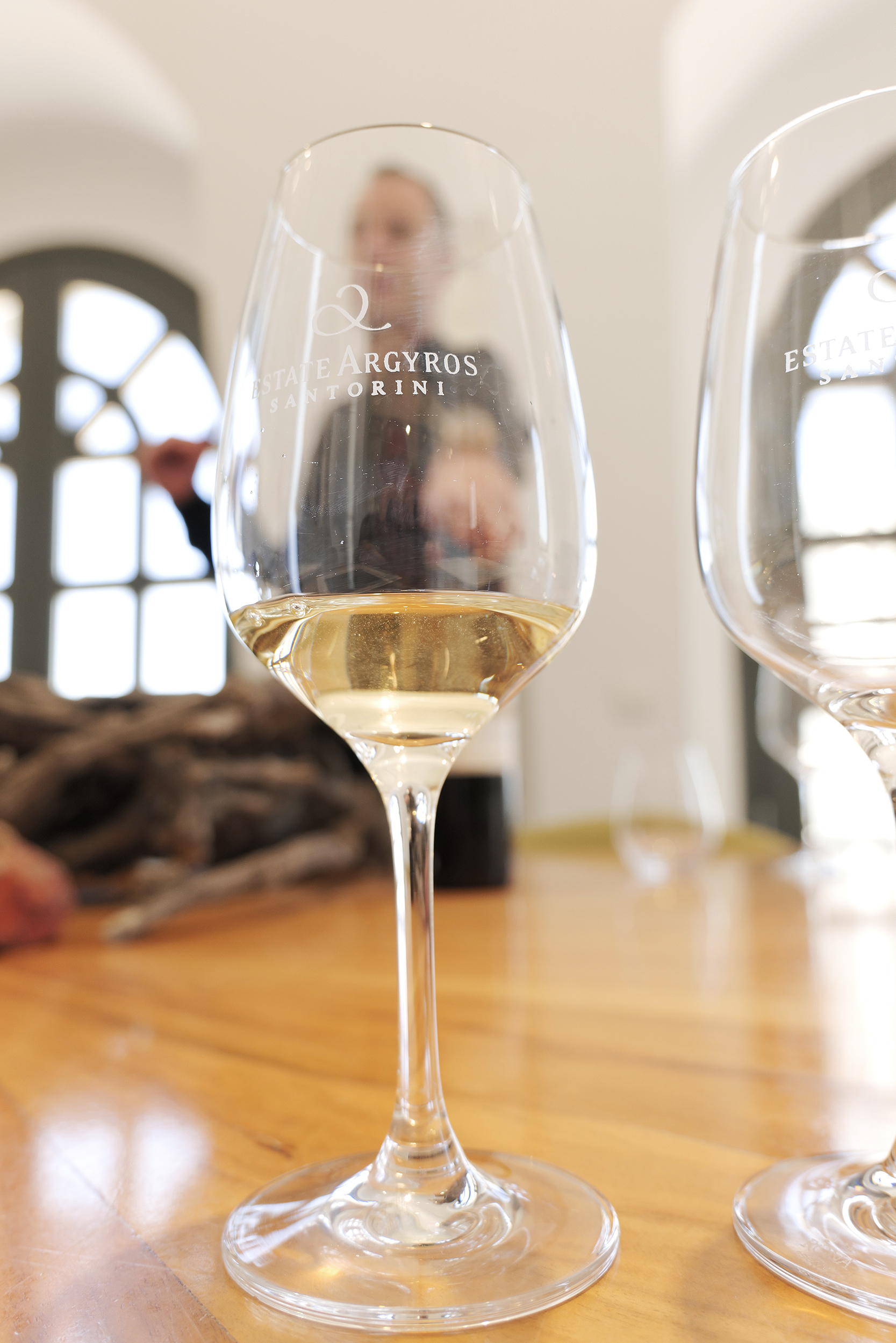
Every bottle is the result of meticulous labor, from vineyard to harvest. The tasting unfolds as a sensory expedition through lava, salt, and citrus. Assyrtiko here is vibrant, high in acidity, structured yet alive—a geological journey in every sip.
Santo Wines
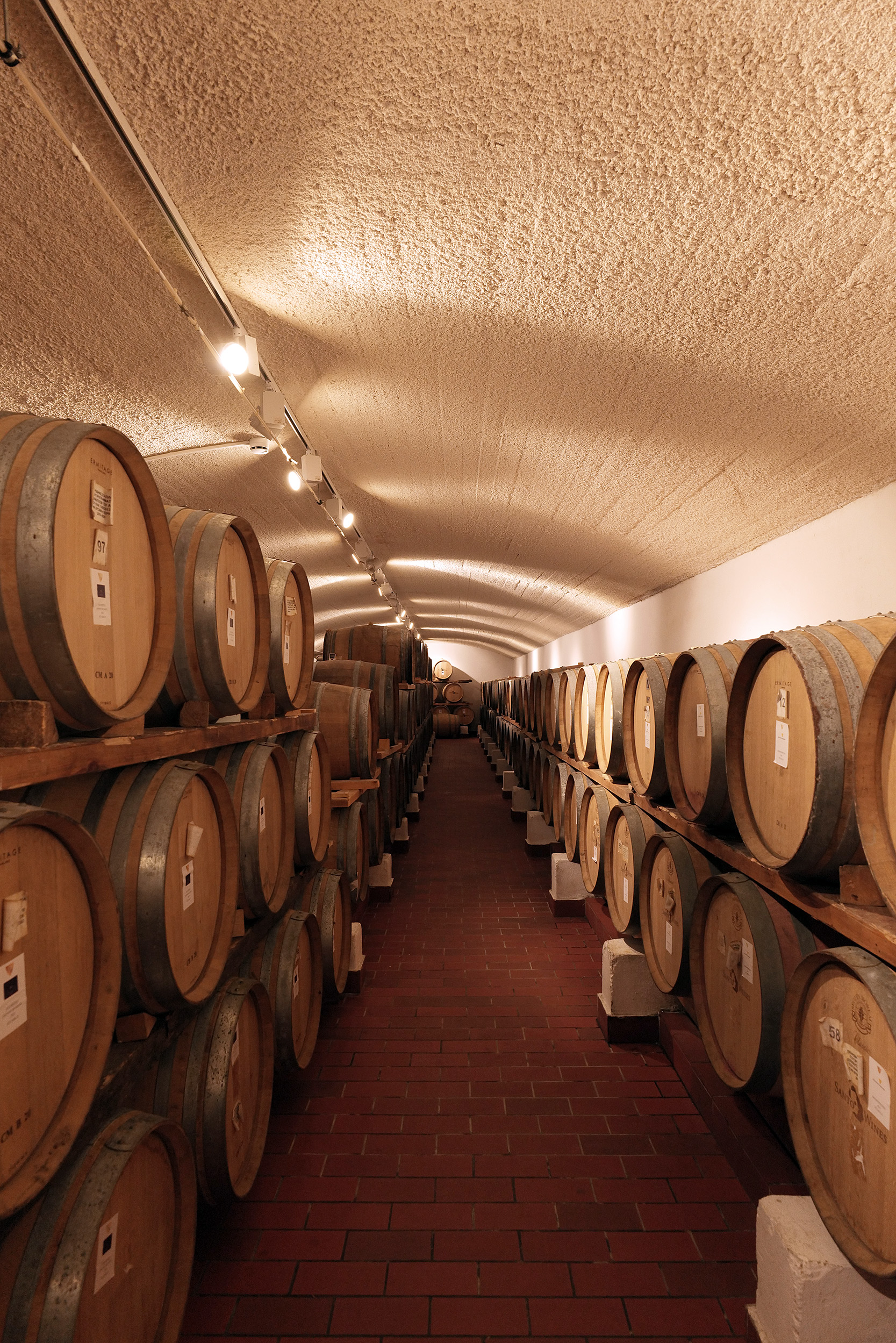
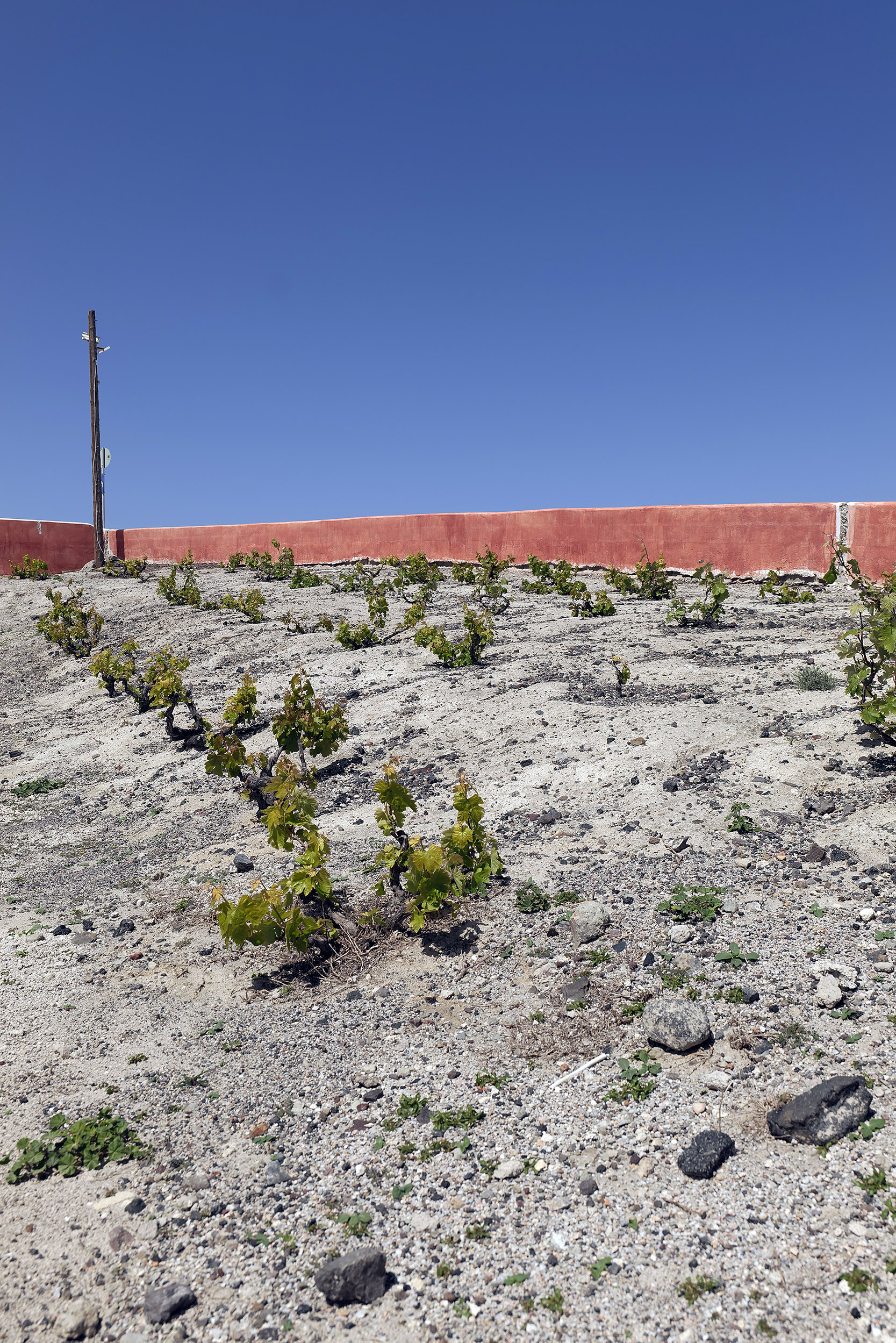
Visiting the winery of the Santorini Union of Cooperatives – Santo Wines – is almost mandatory for anyone wanting to understand the island’s agricultural soul. Built in 1992 in Pyrgos, its terraced structure mirrors the way vines are cultivated across the cliffs. Katerina Filippou, director of promotion and marketing, leads our tour across the site and history.
We pause on the roof, gazing out at the famous view. Katerina tells us how Santorini was spared from the phylloxera plague that devastated Europe in the 19th century. The volcanic soil, rich in sulfur, is inhospitable to the parasite. Santorini’s vineyards, at least 4,000 years old, have remained intact.
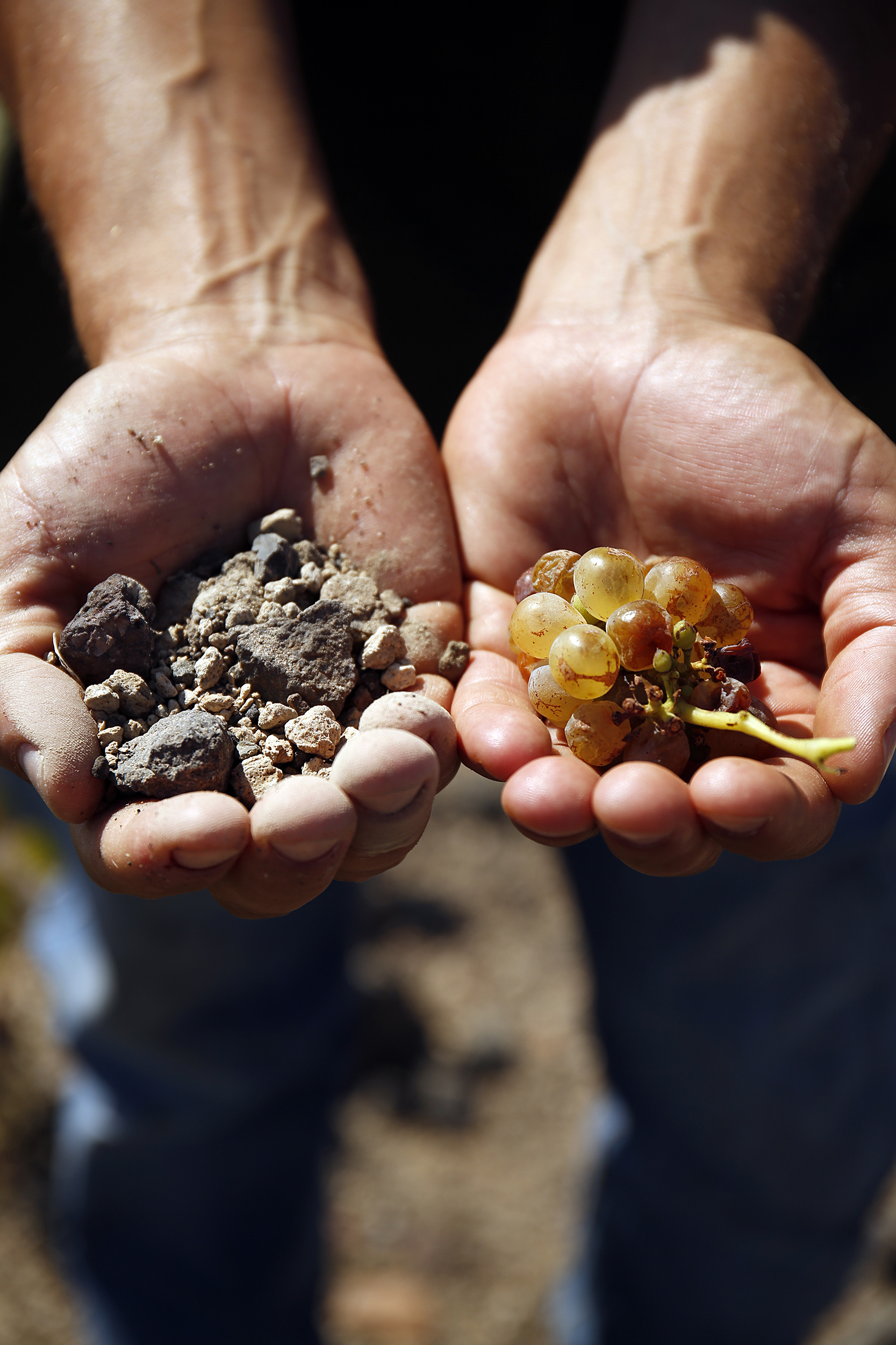
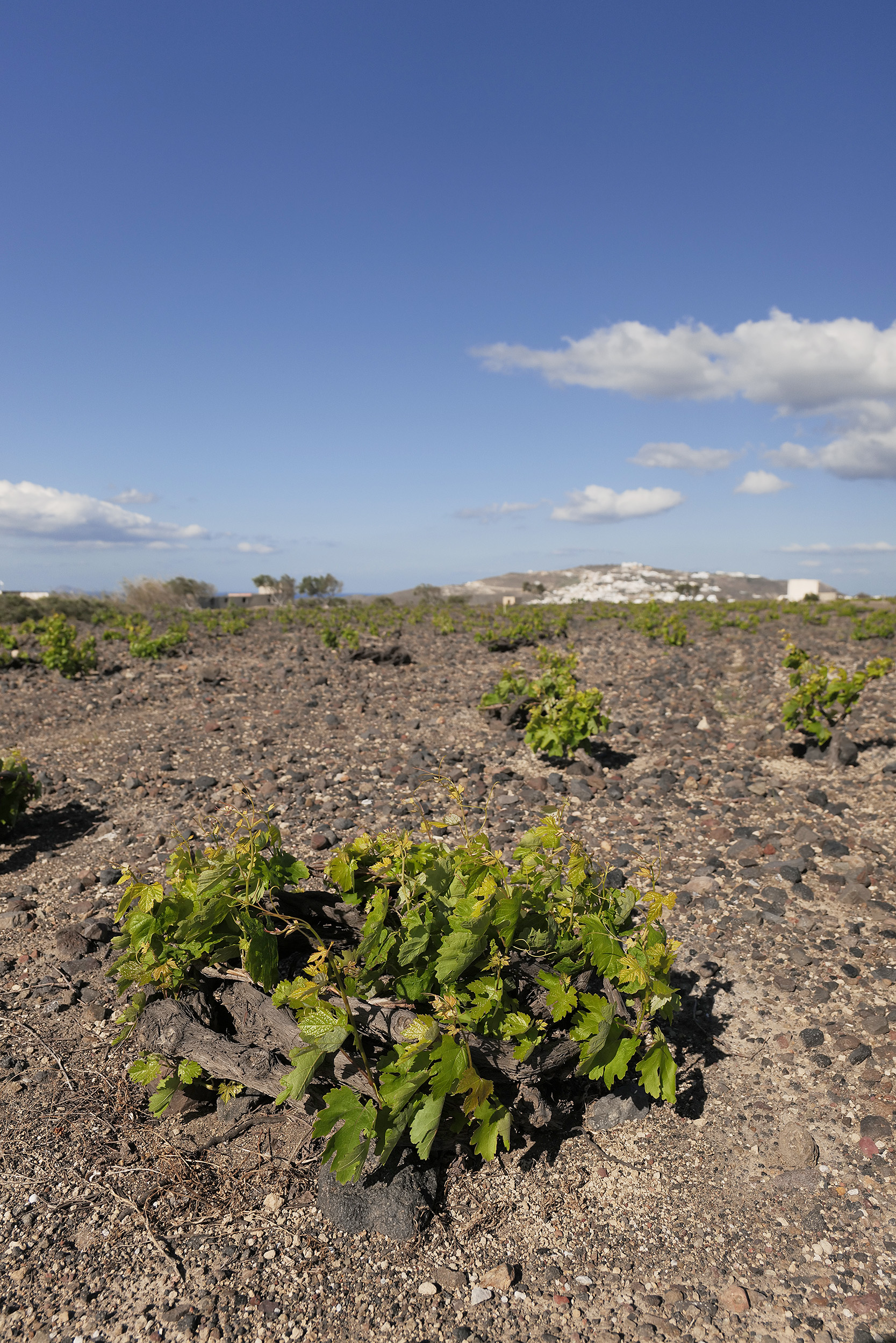
Founded in 1911, the cooperative was created to protect local growers, traditional practices, and regional identity. Santo also produces PDO products – fava, capers, caper leaves, cherry tomatoes – and develops native plant nurseries.
Inside the tasting area, Katerina clarifies a local myth: Nyktéri, the famous Assyrtiko wine, wasn’t named because the harvest happens at night. The grapes were picked early in the morning, pressed slowly throughout the day, and crushed at night to avoid heat. To qualify as Nyktéri, a wine must contain at least 85% Assyrtiko, with Athiri and Aidani completing the blend.
Vassaltis Vineyards
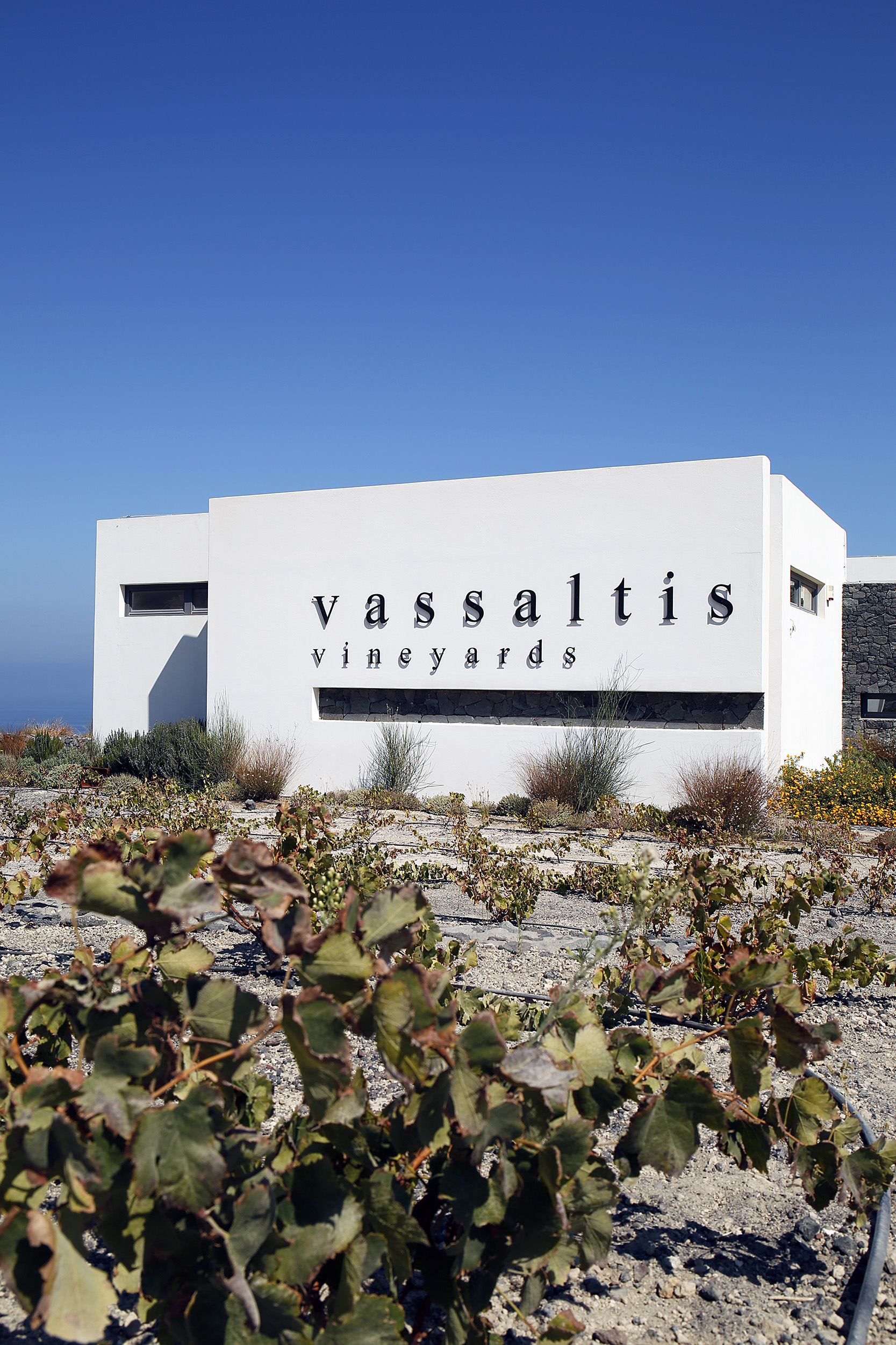
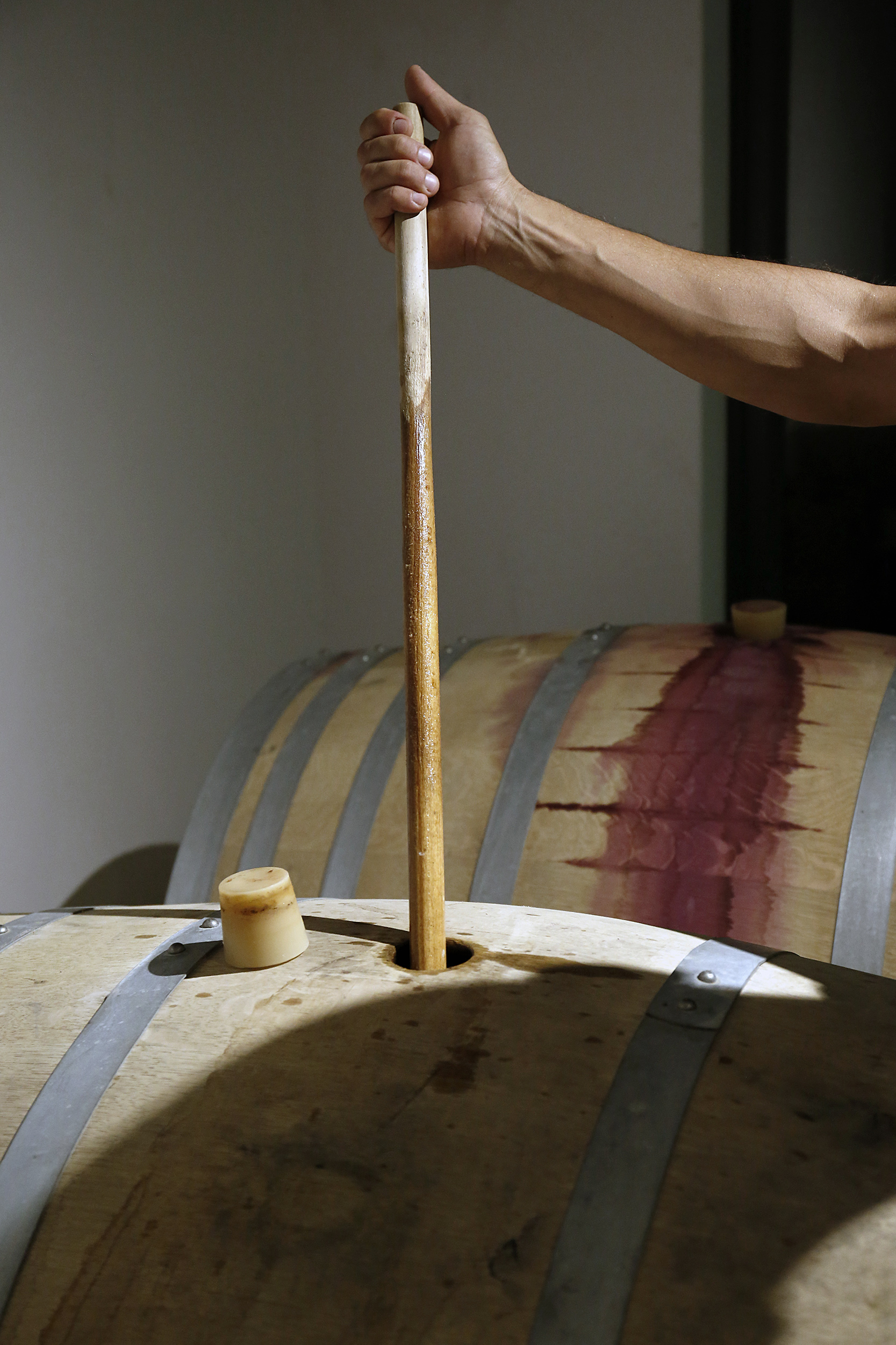
Giannis Valambous returned to Santorini from a finance career in London and founded Vassaltis in 2014 – right at the peak of Greece’s economic crisis. What he inherited wasn’t just land, but a calling. He didn’t want to build just another winery. He wanted to keep tradition alive while crafting world-class wines that would travel.
Alongside Elias Roussakis and Yiannis Papaeconomou, he created a refined, modern winery. Today, Vassaltis cultivates 250 stremmata on Thira and Thirasia and just released its 10th vintage. In addition to Assyrtiko, they grow Aidani, Mandilaria, Mavrotragano, and Athiri. While Greek wine has gained global traction, Giannis remains cautiously optimistic. Tourism, construction, and the climate crisis are putting pressure on the vineyards.
At 44, he’s clear-eyed about the road ahead. “As long as I’m here,” he says, “I’ll protect it, preserve it, expand it—and restore it where needed.” There’s a quiet conviction in his voice, a sense that quality and place still matter. Santorini may be small, but for Valambous, its viticultural significance is enormous.
Before we leave, we visit a photography exhibit by Robert McCabe, curated by Christina Petkopoulou and housed inside the winery – a reminder that wine, like art, preserves memory.
As I leave the island – after countless conversations and shared bottles – I try to remain as objective as possible. Yet the lingering feeling is this: in the world of wine, I’ve walked across a delicate floor, whose fine texture revealed just how fragile it all really is.
Photography: Nikos Kokkas



